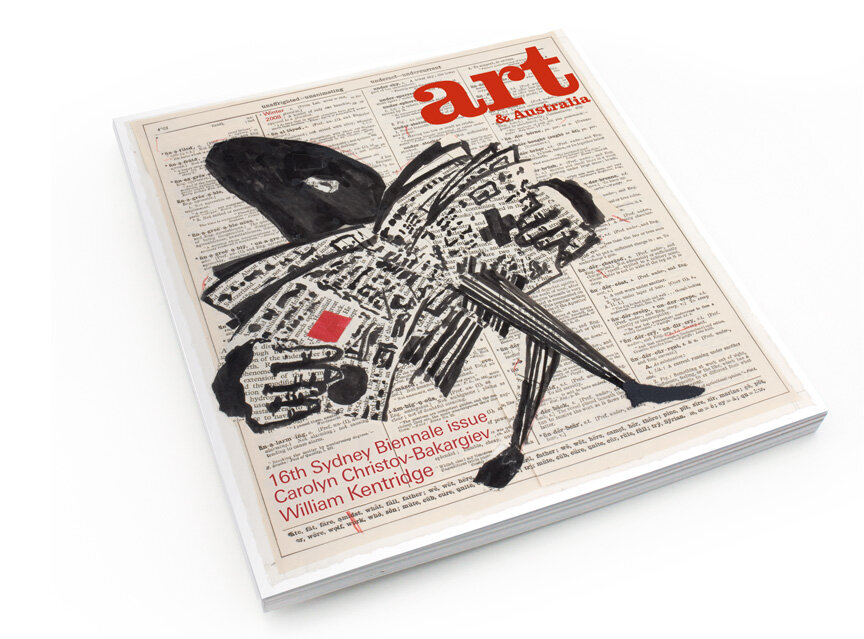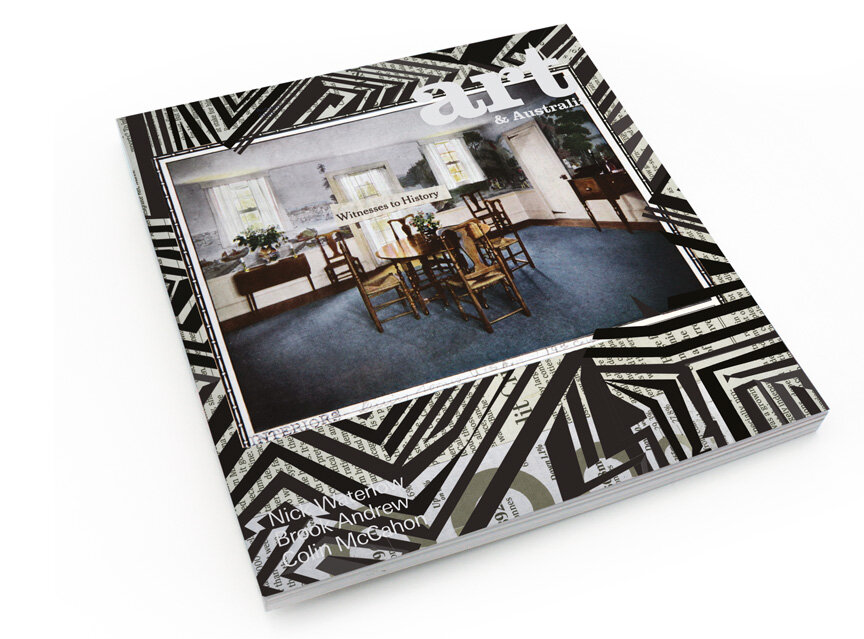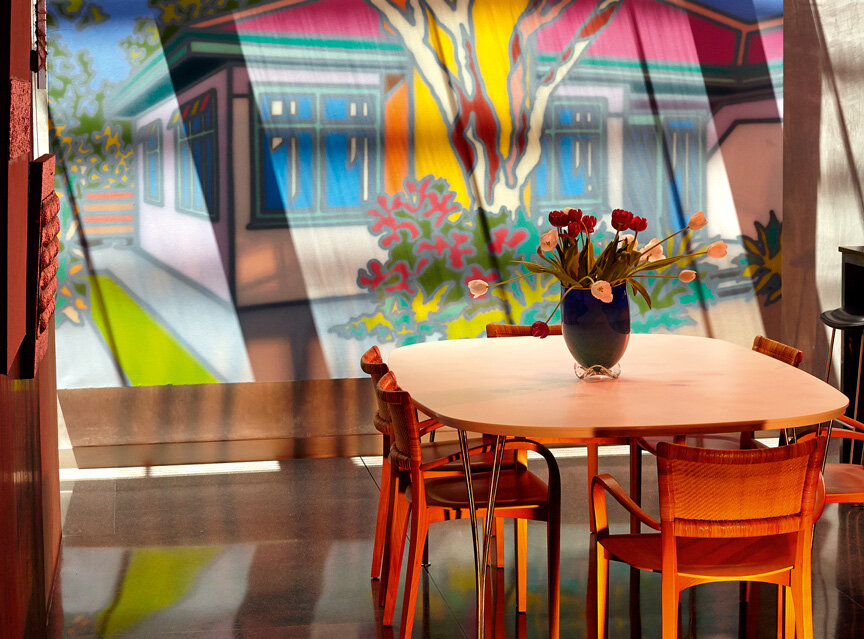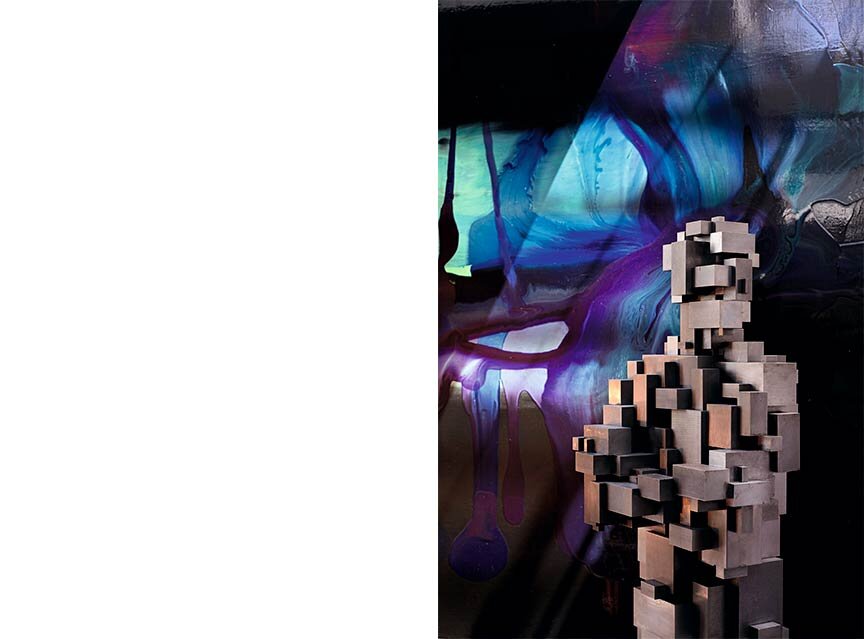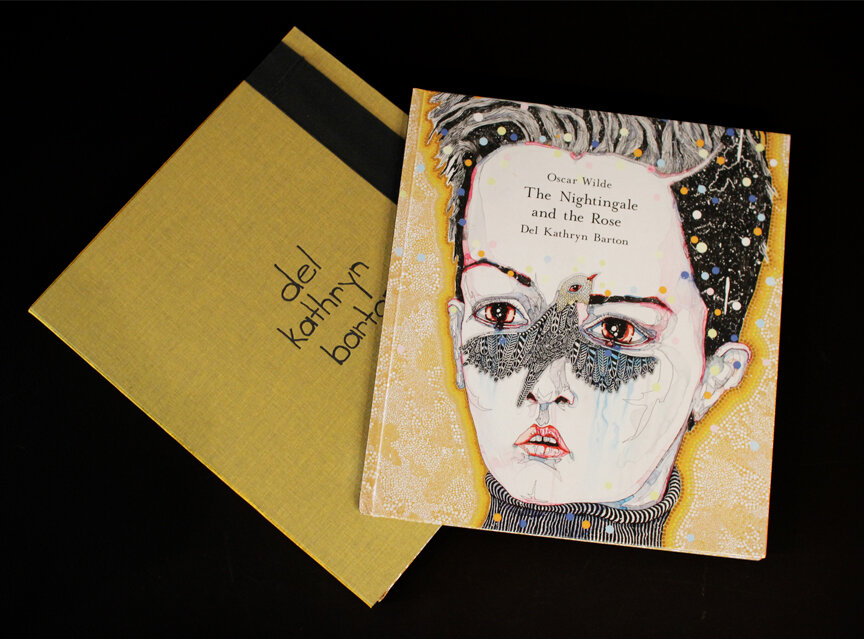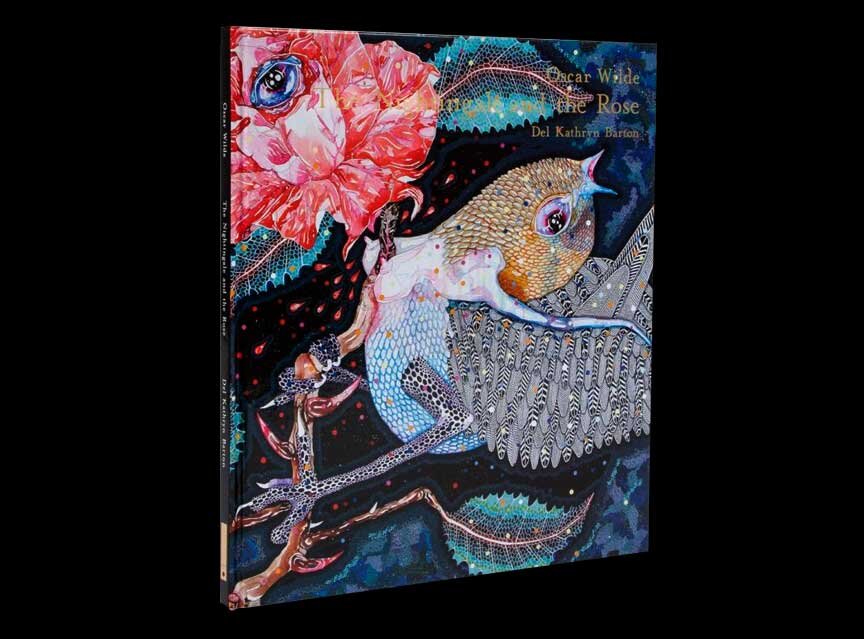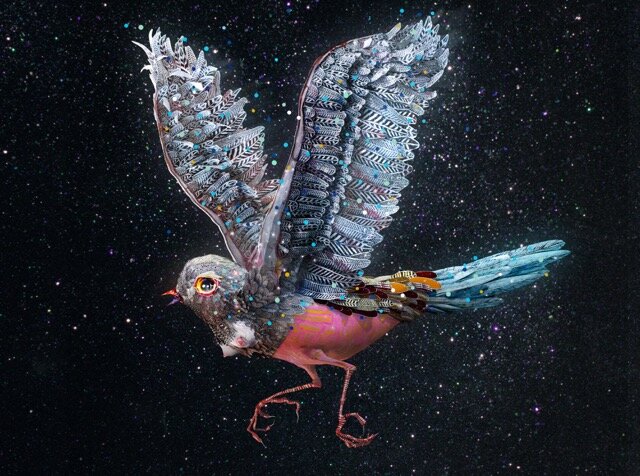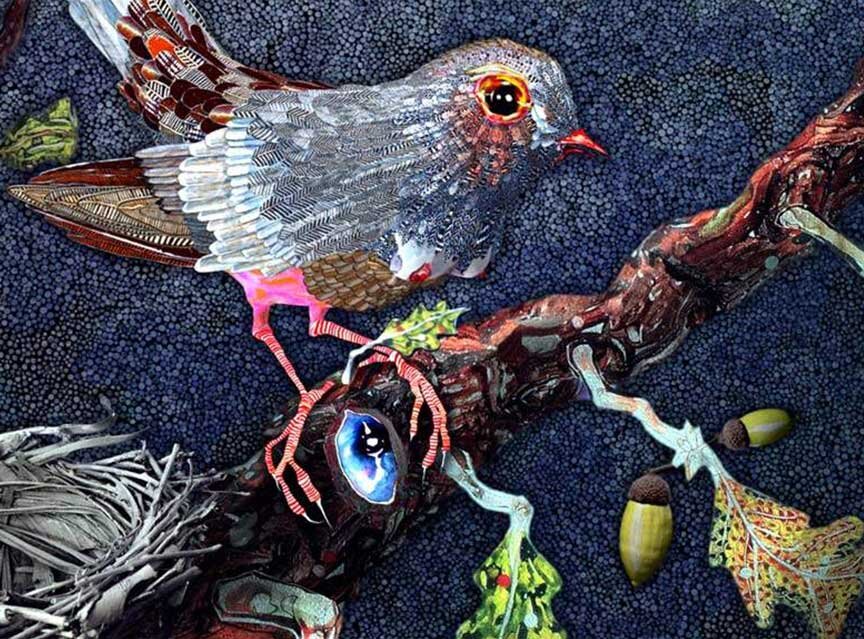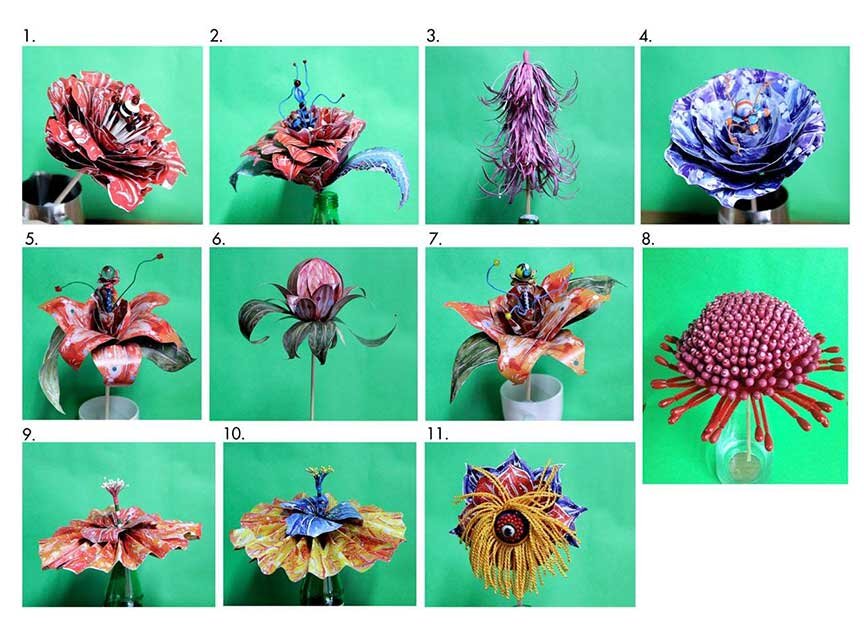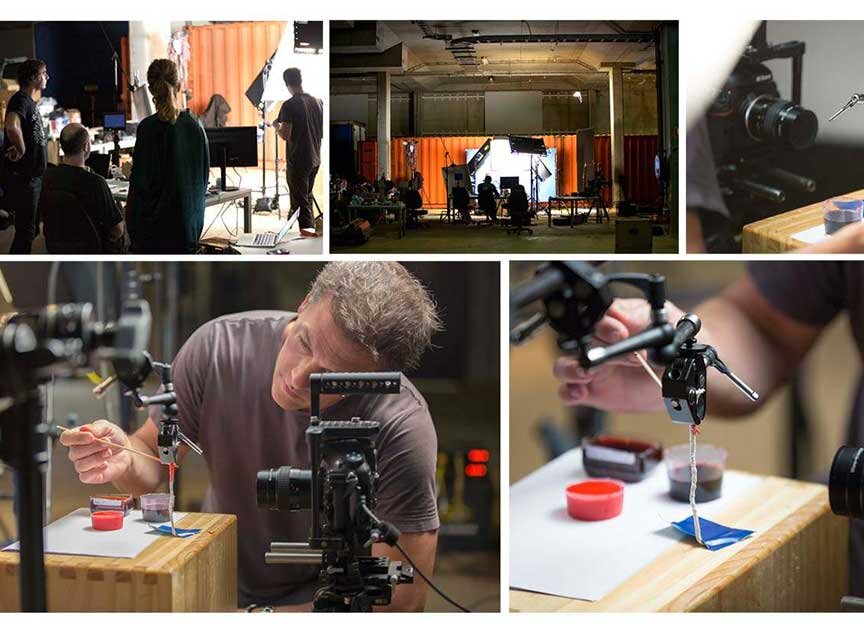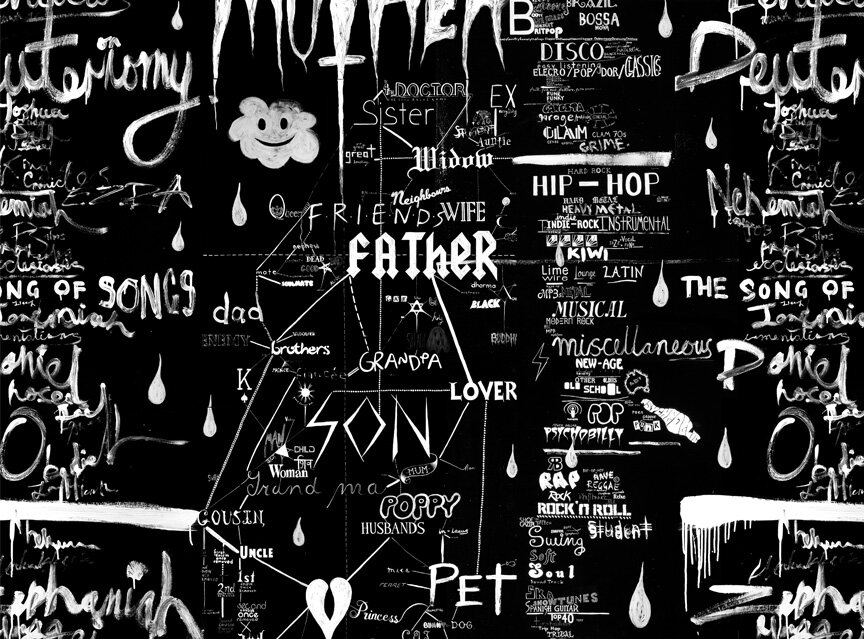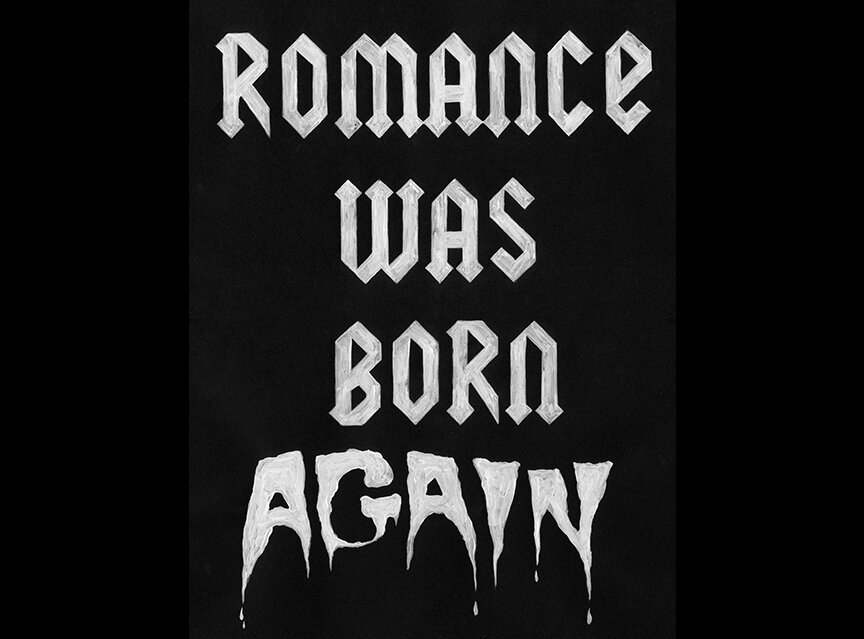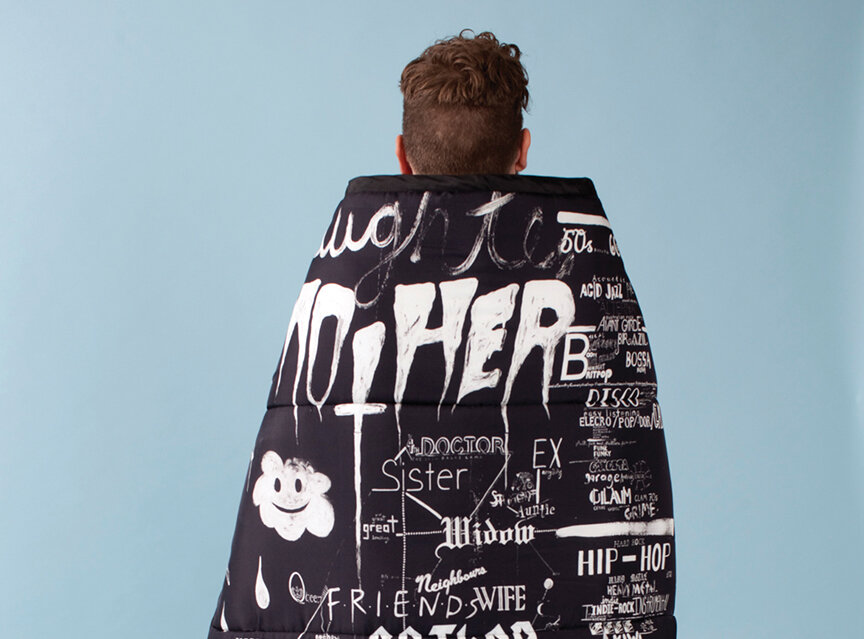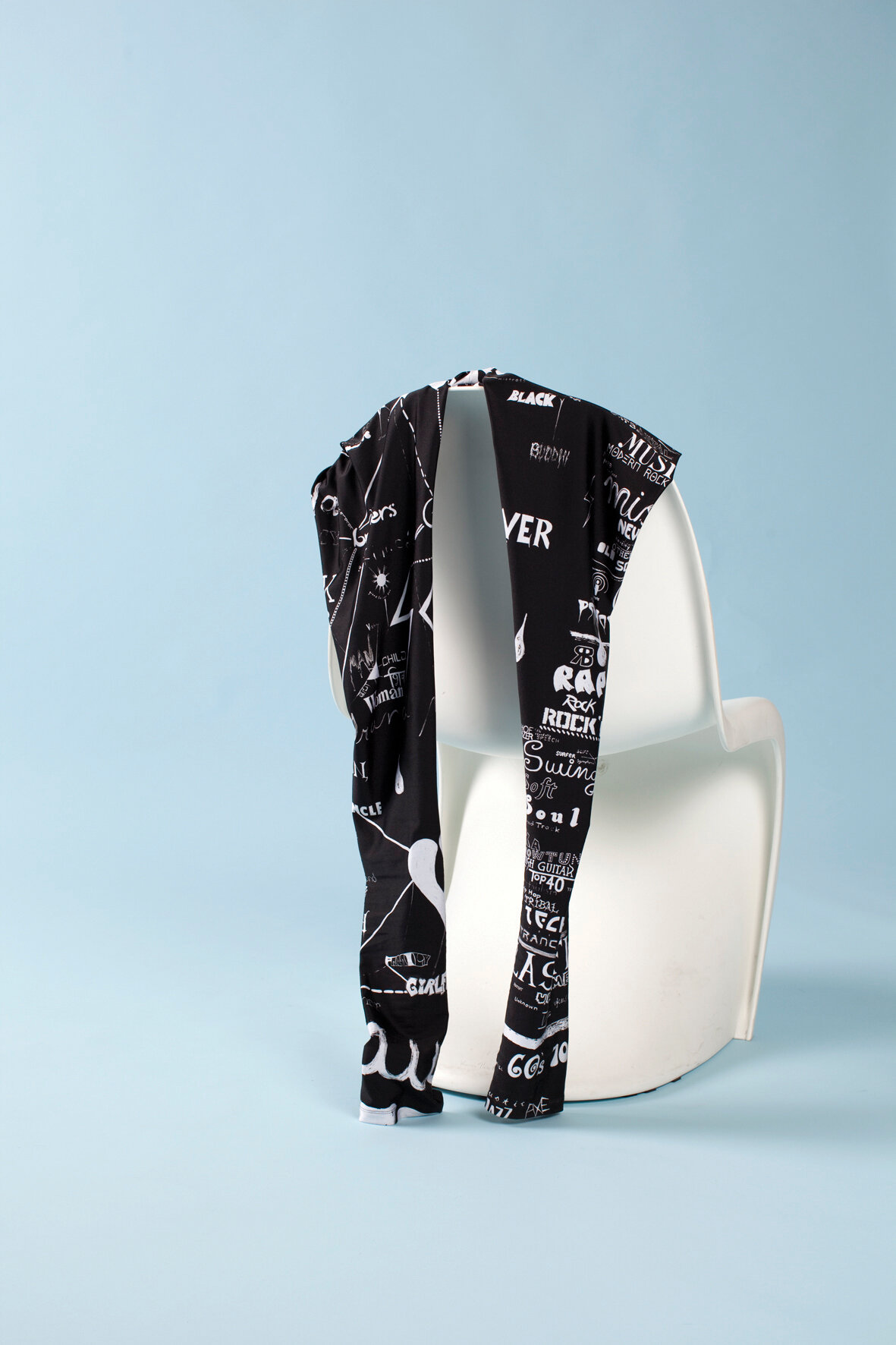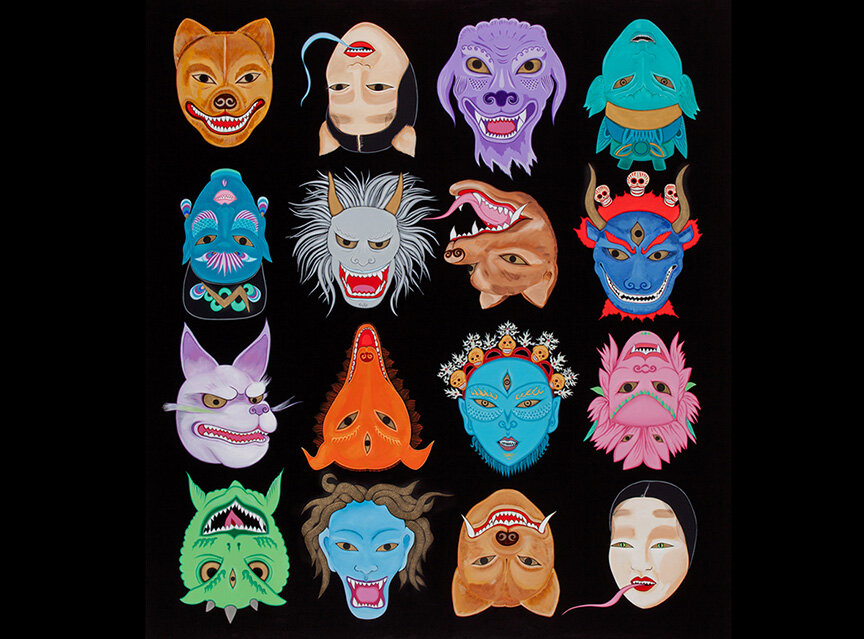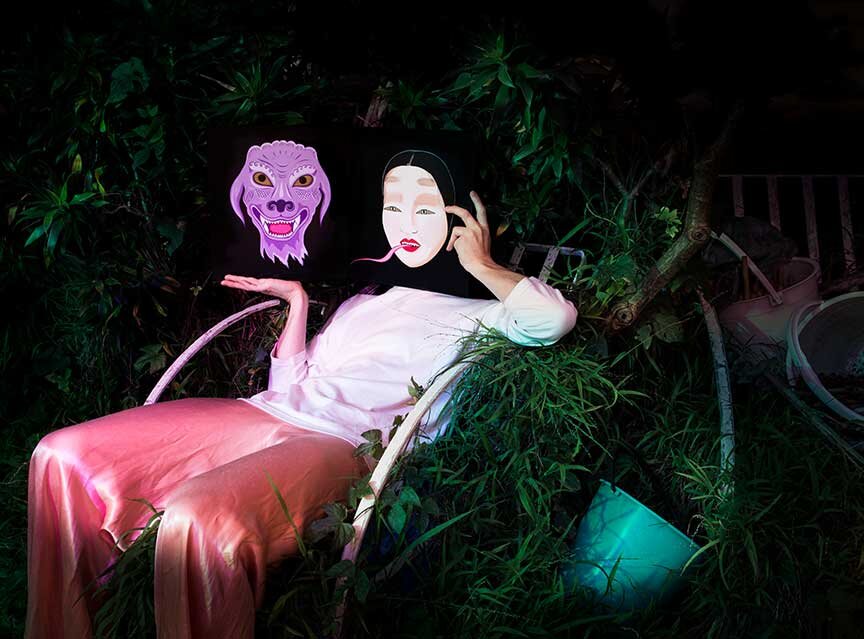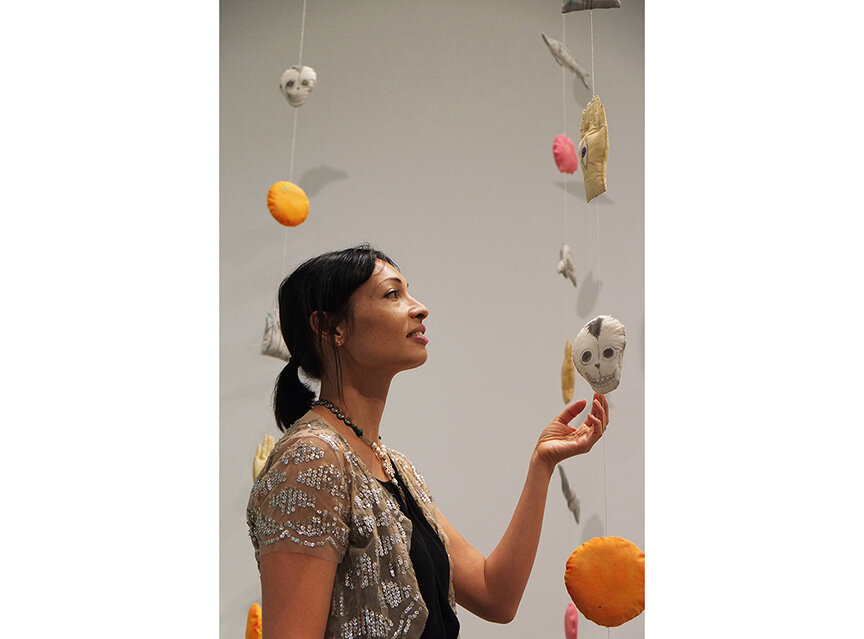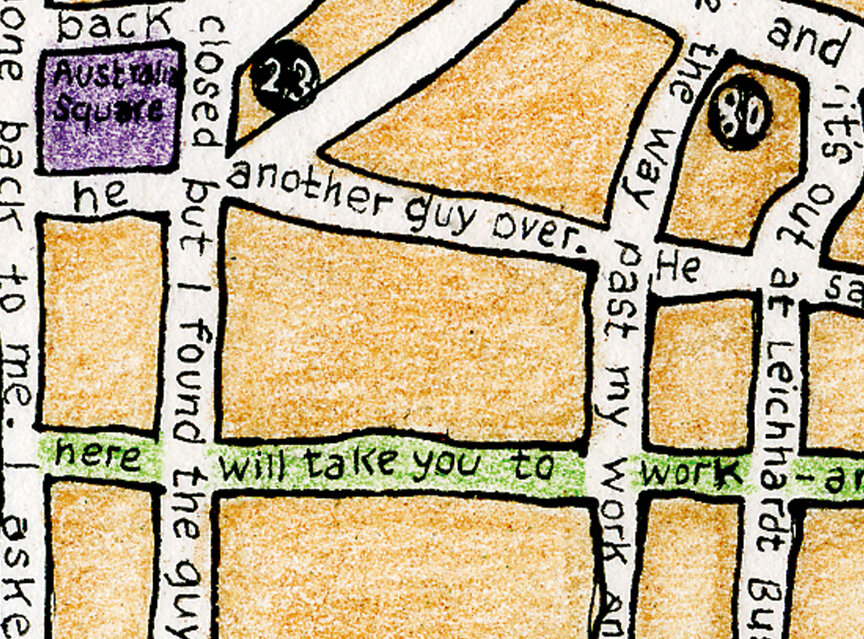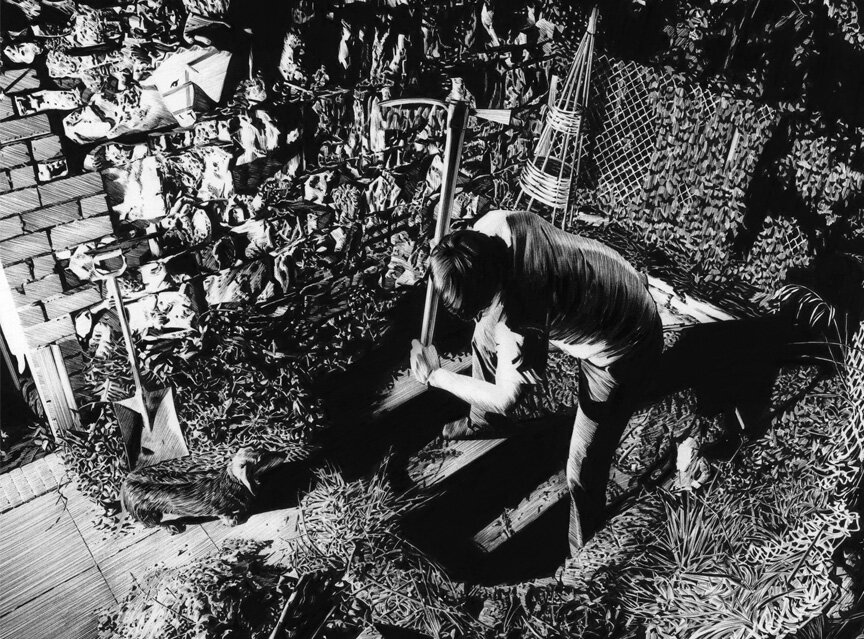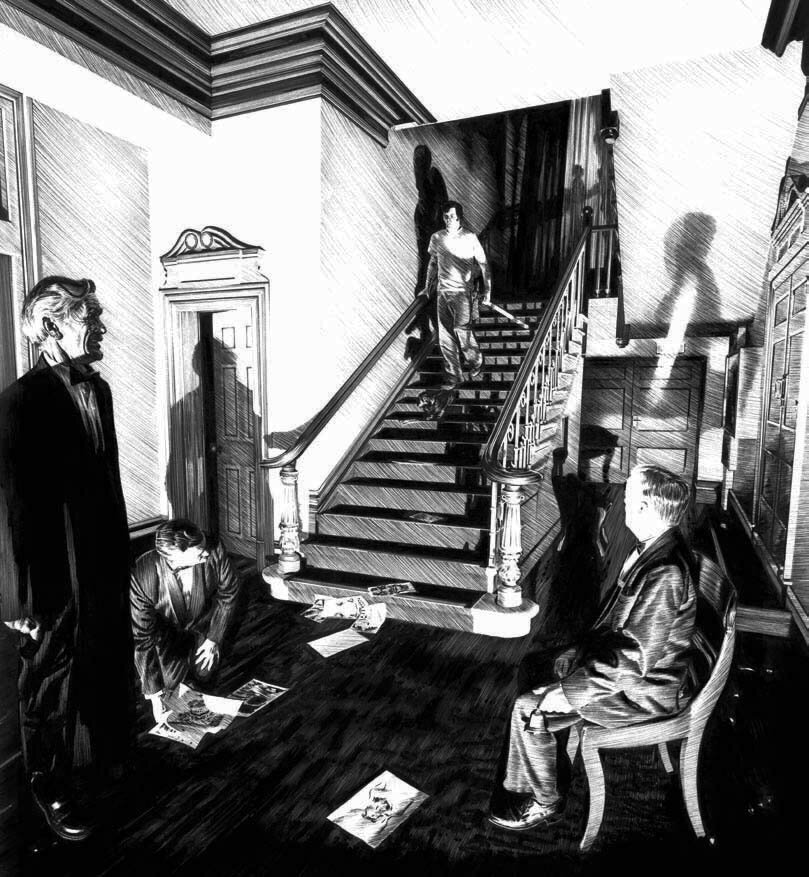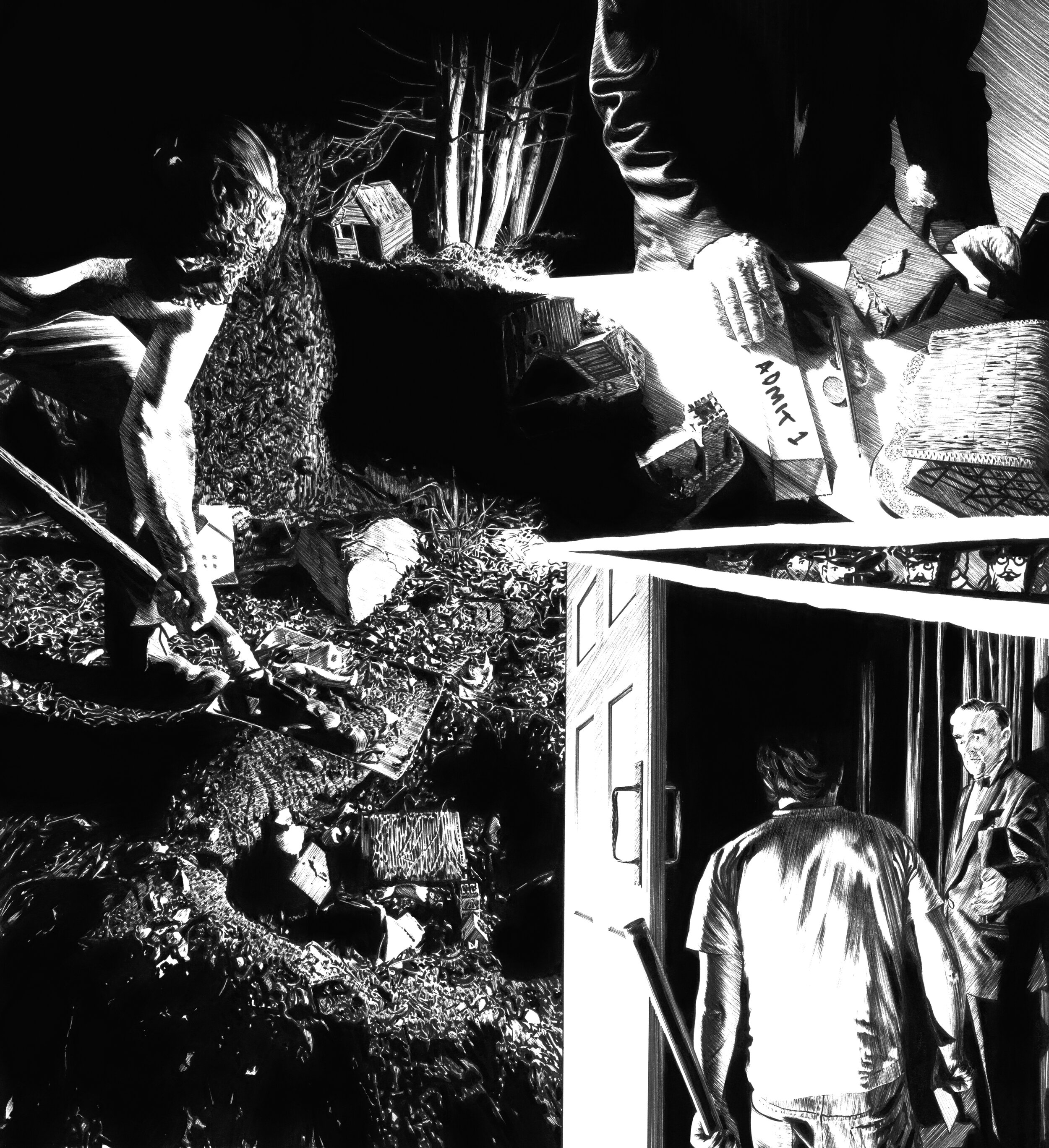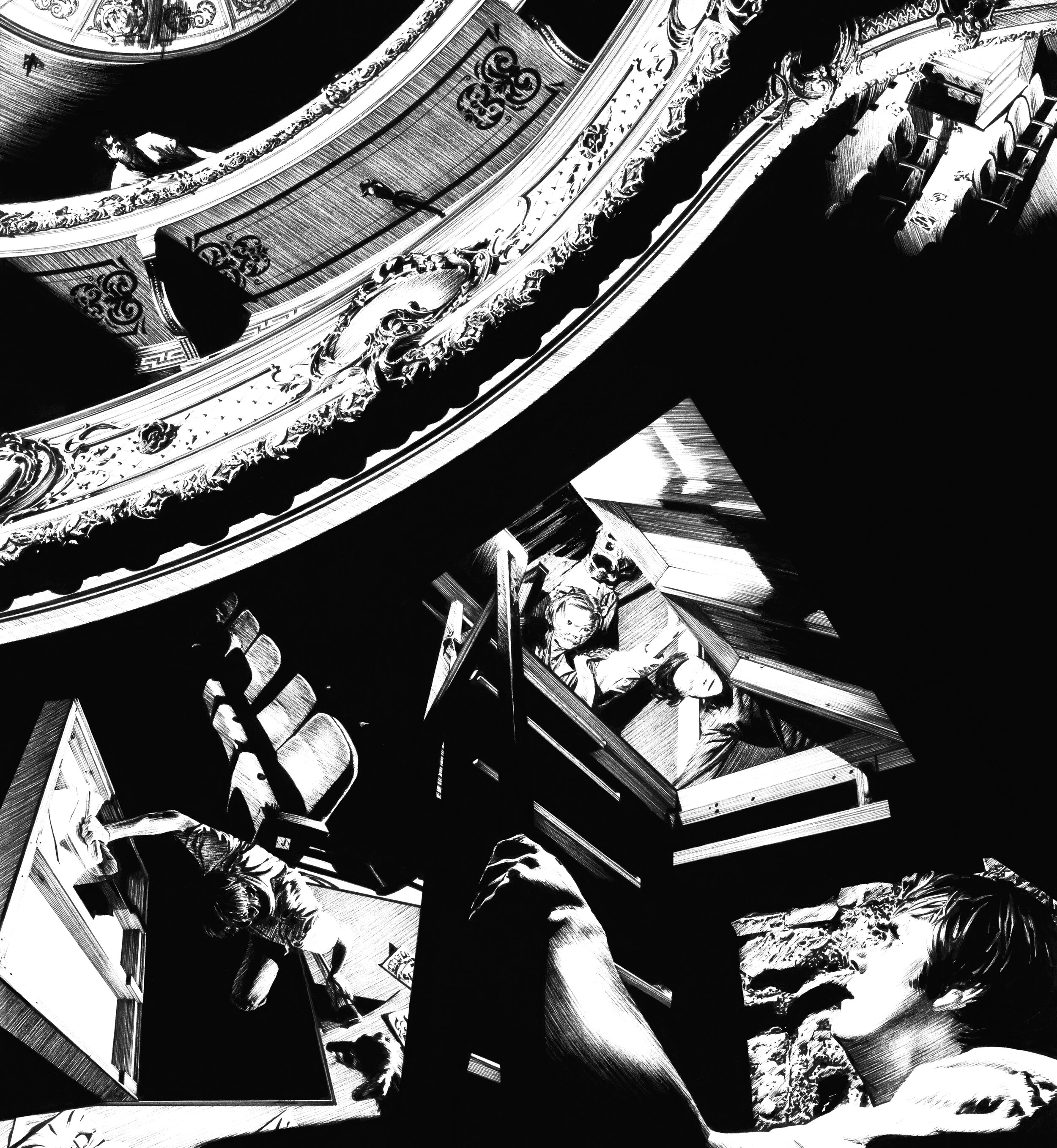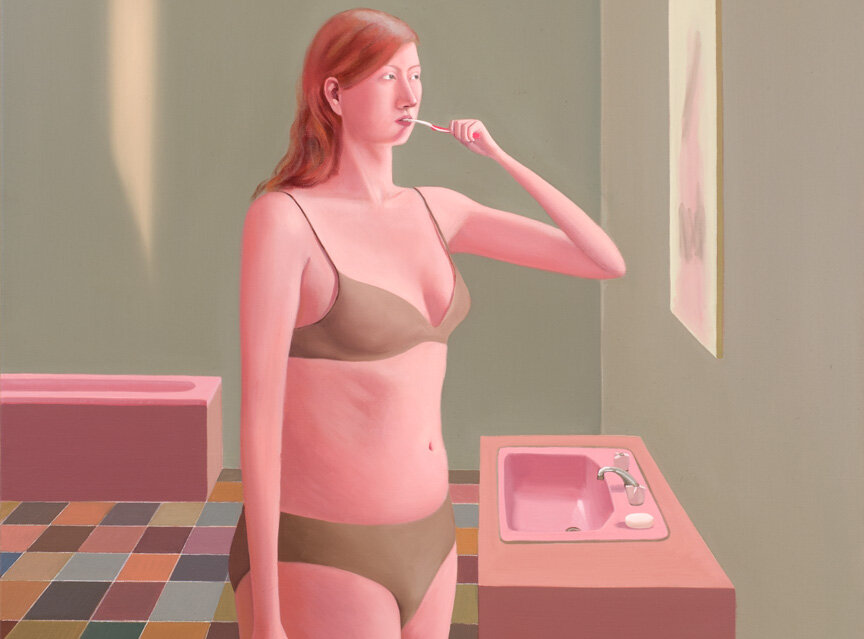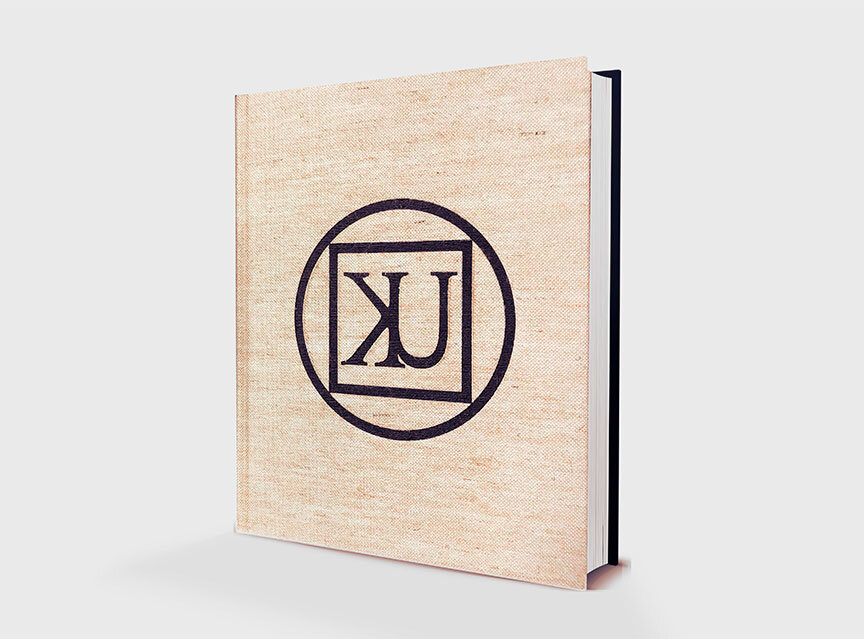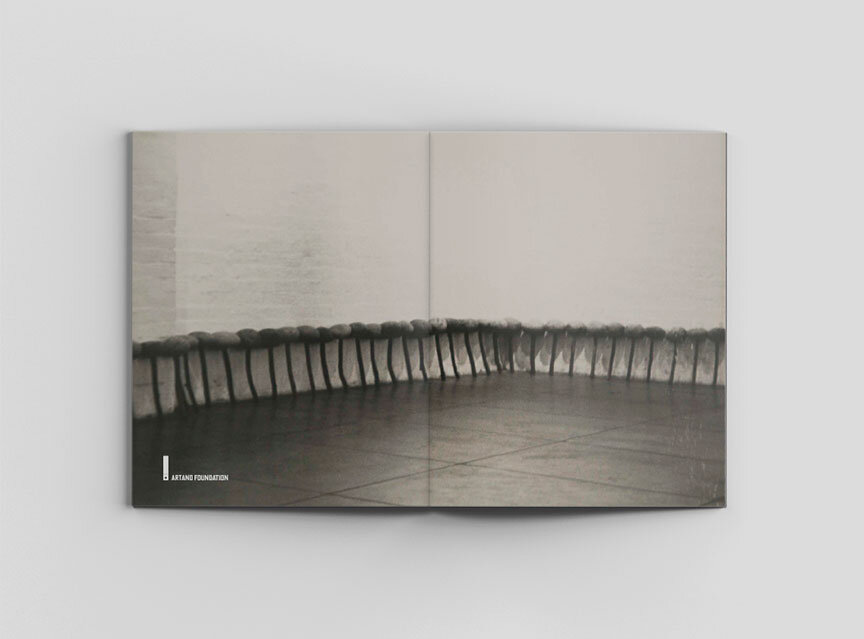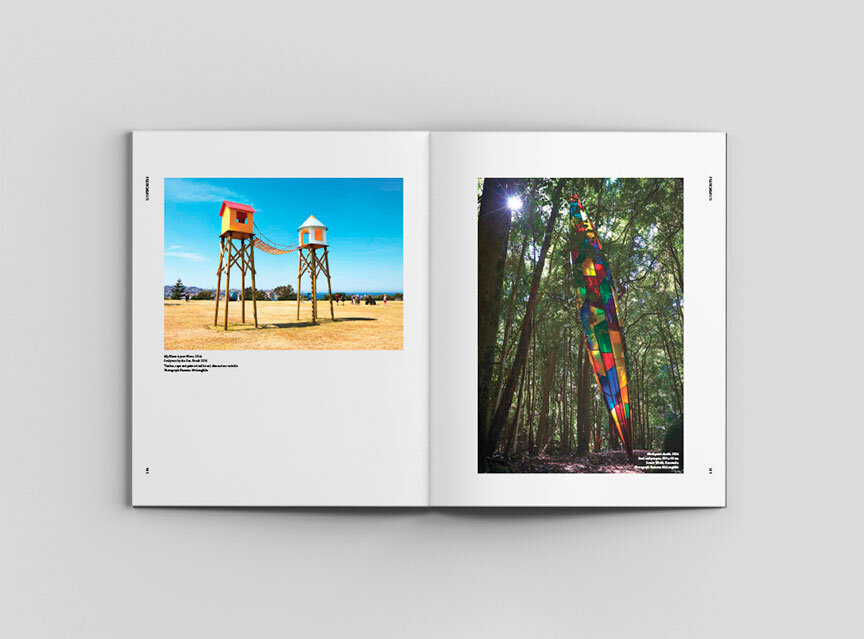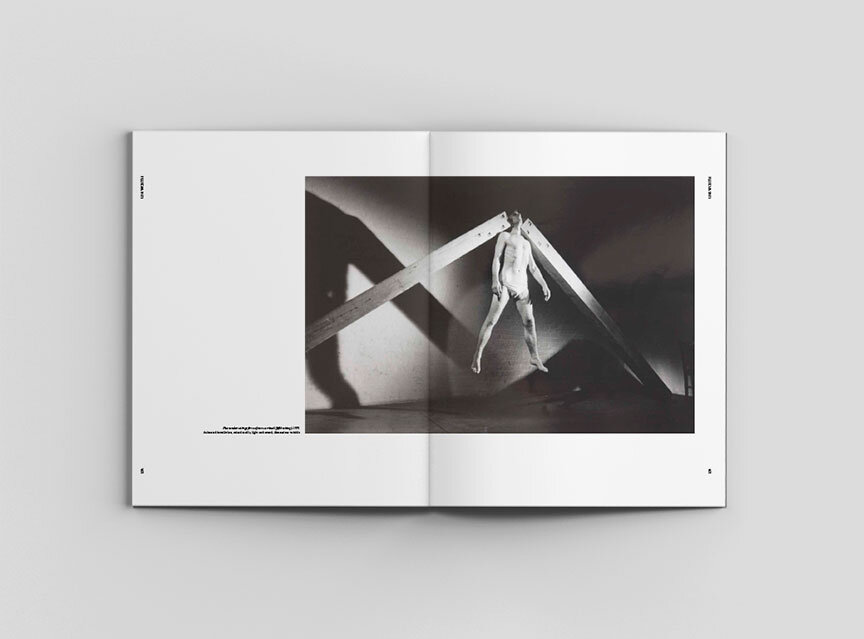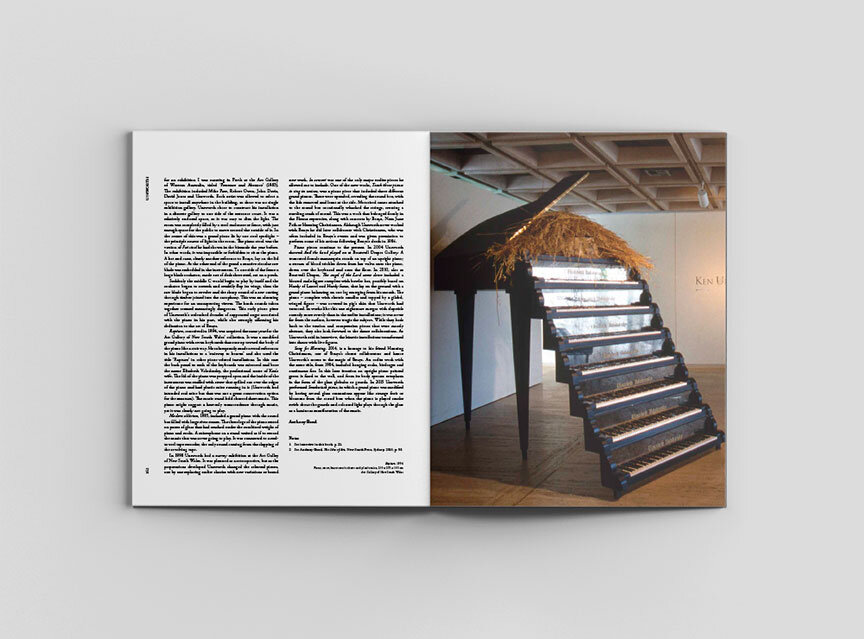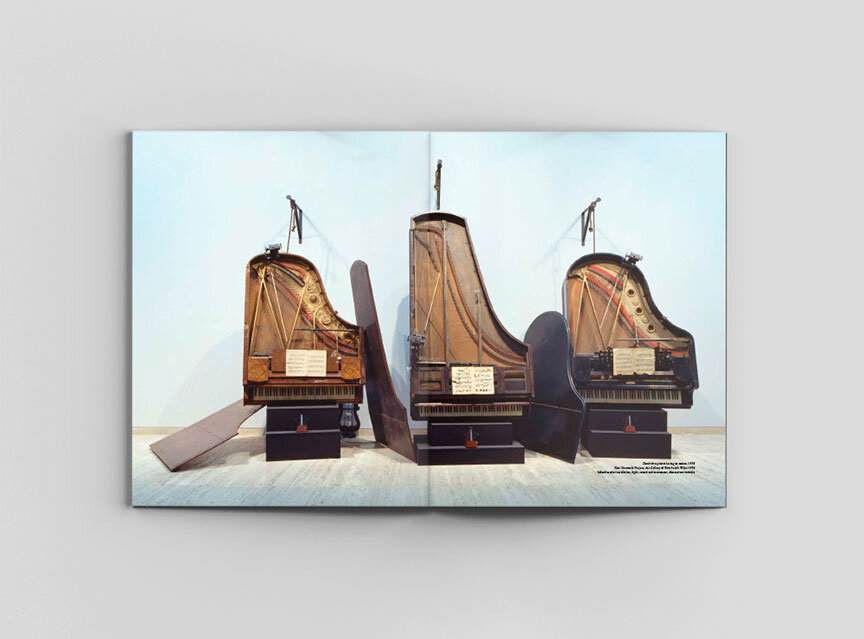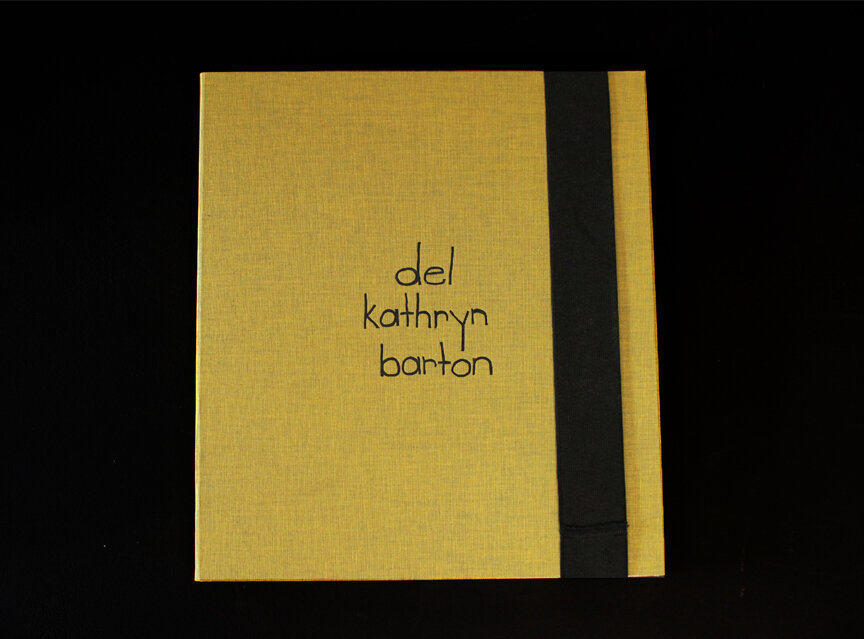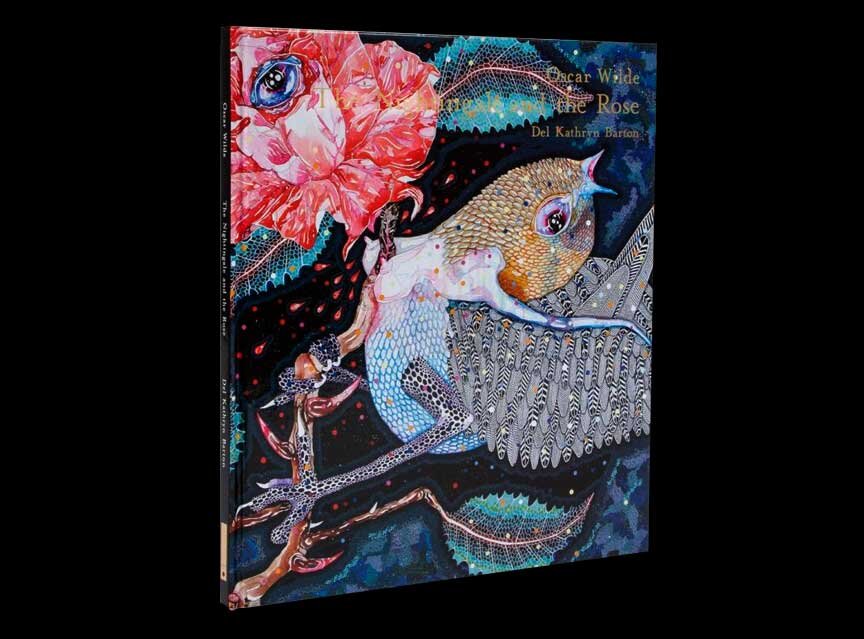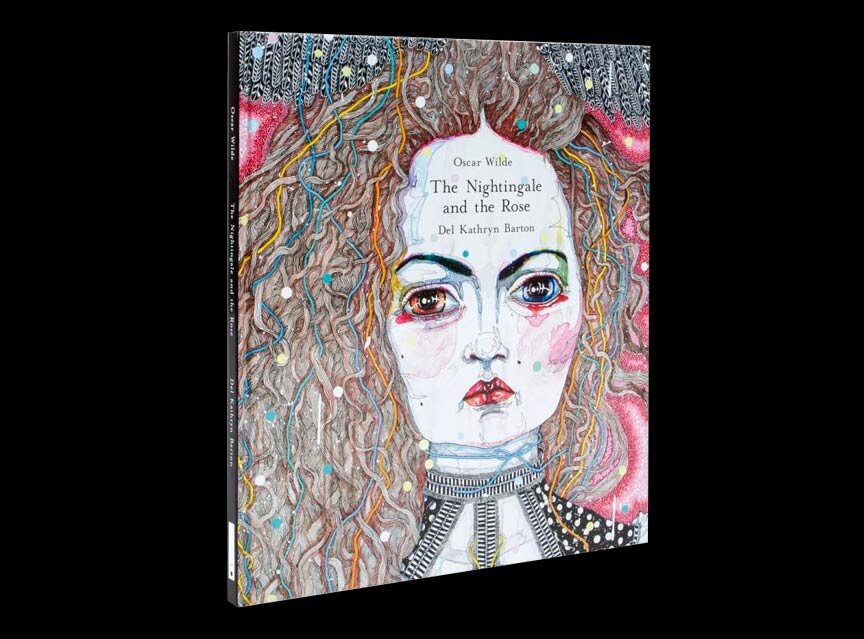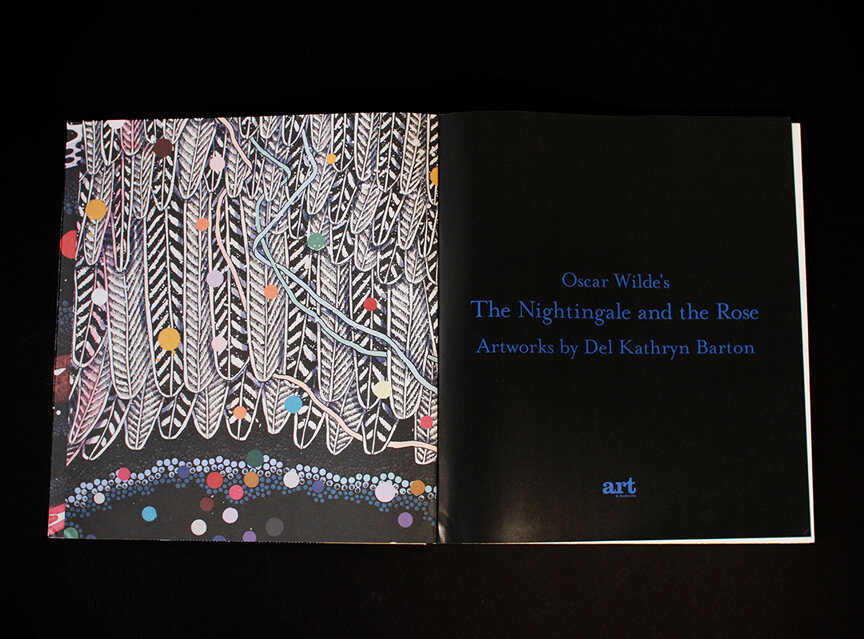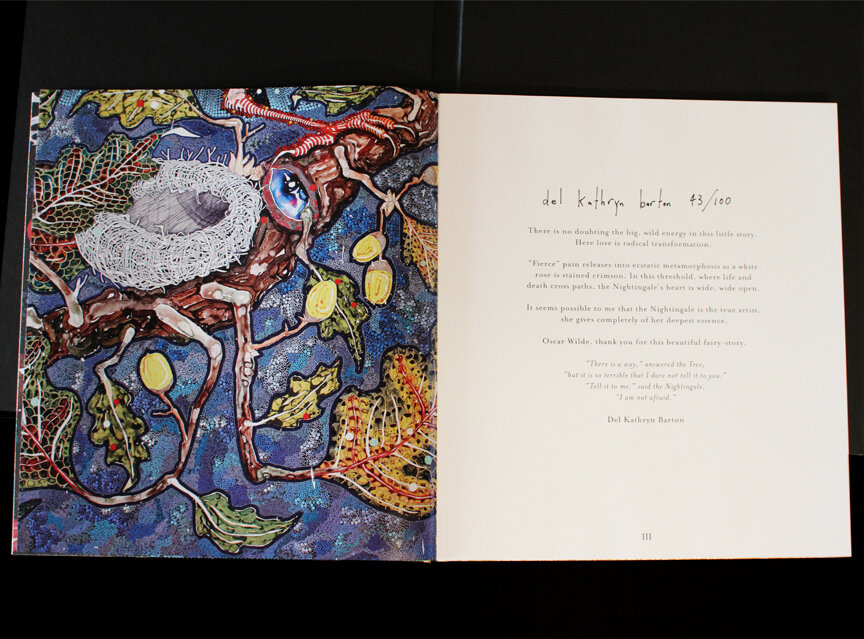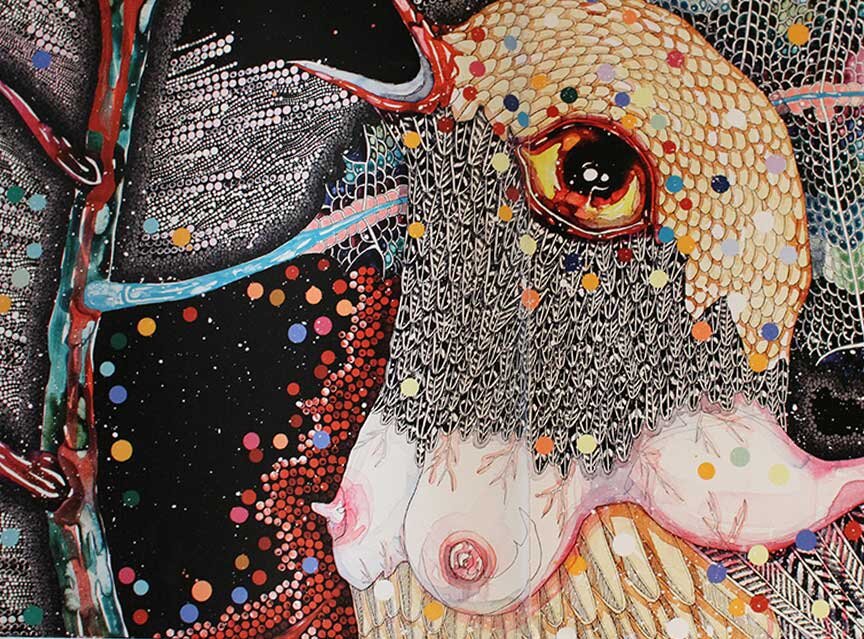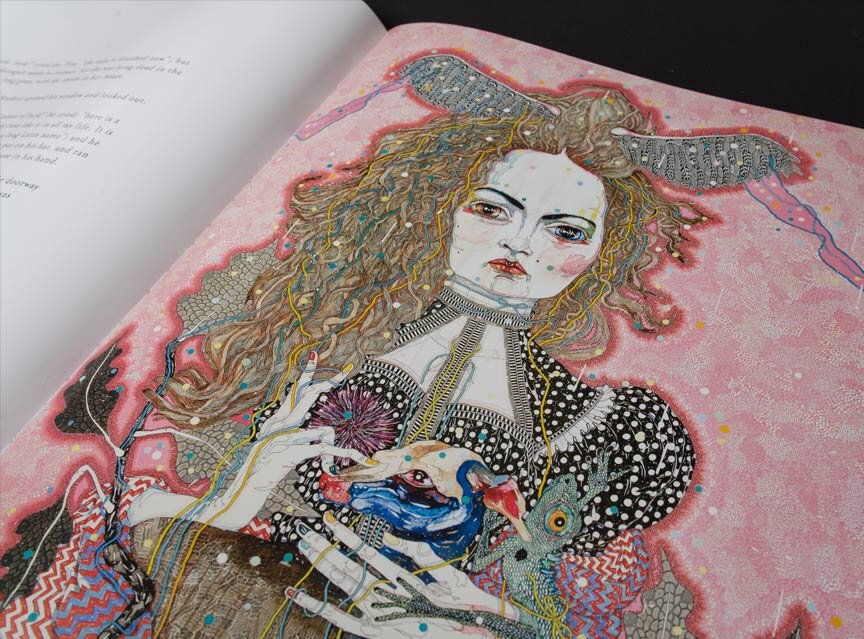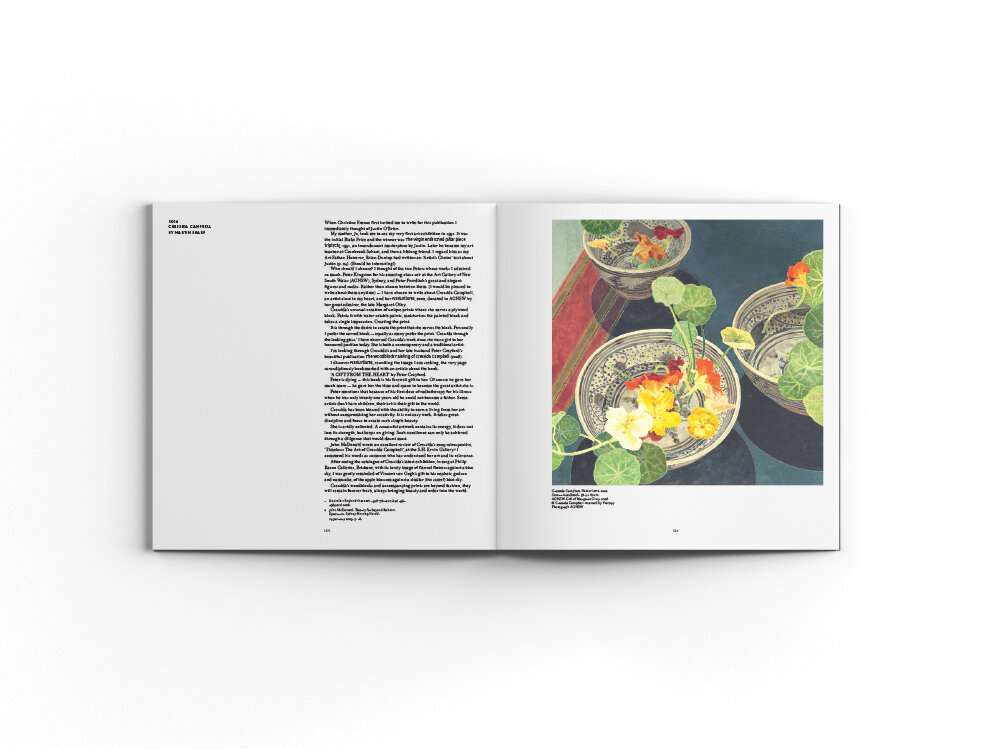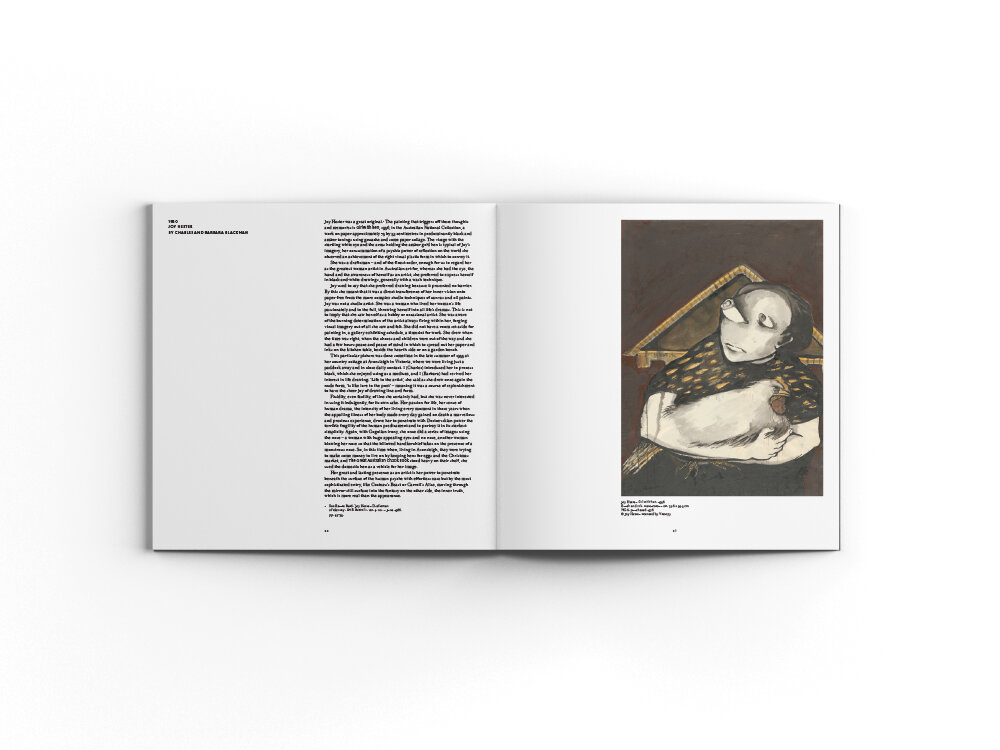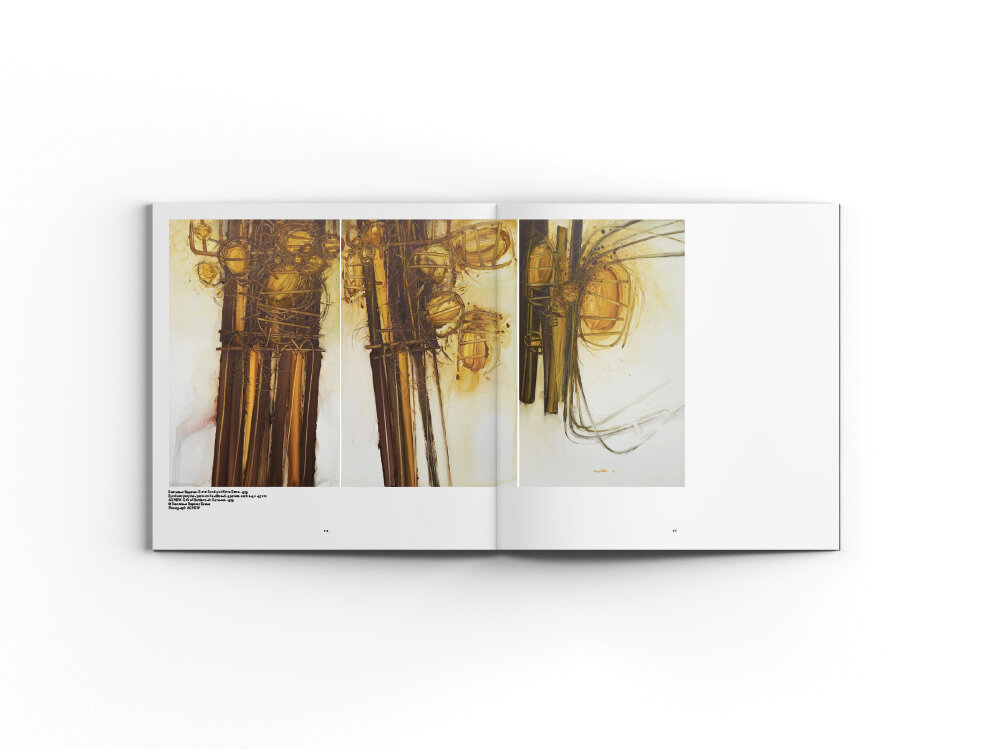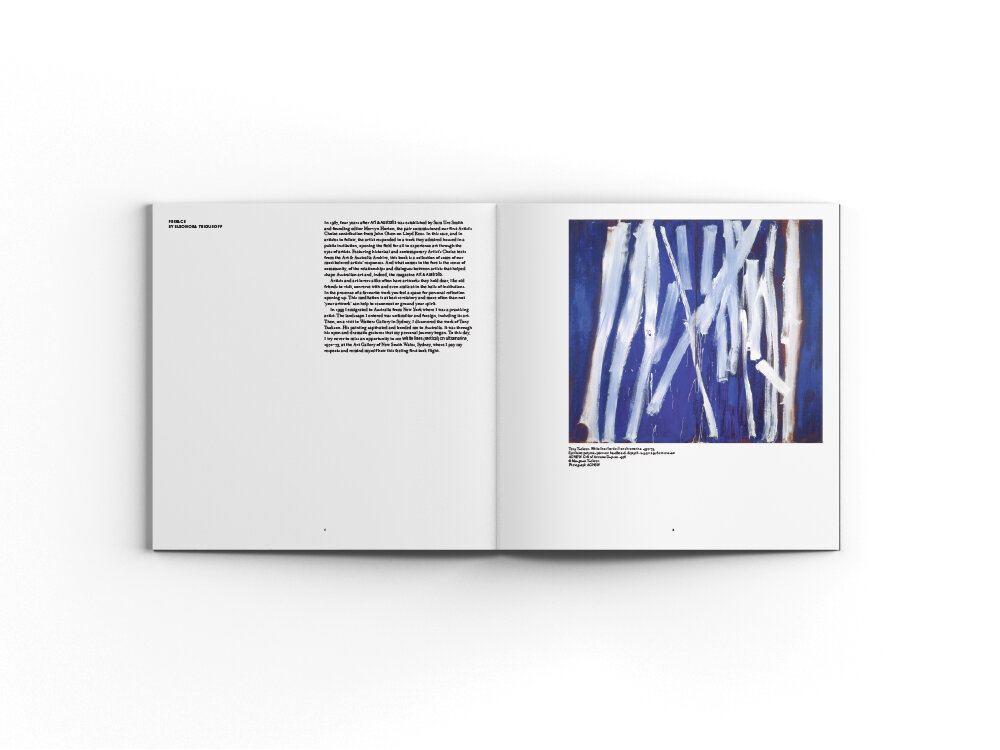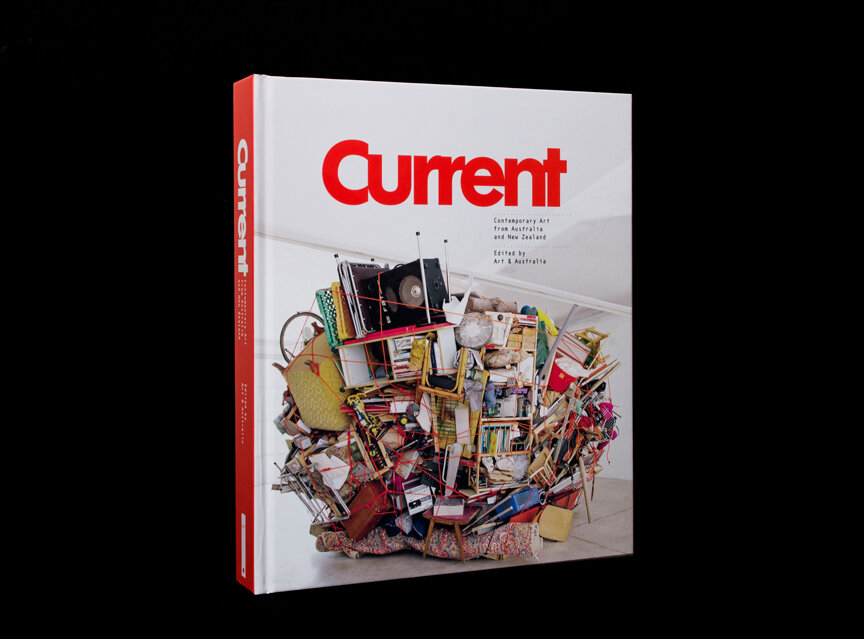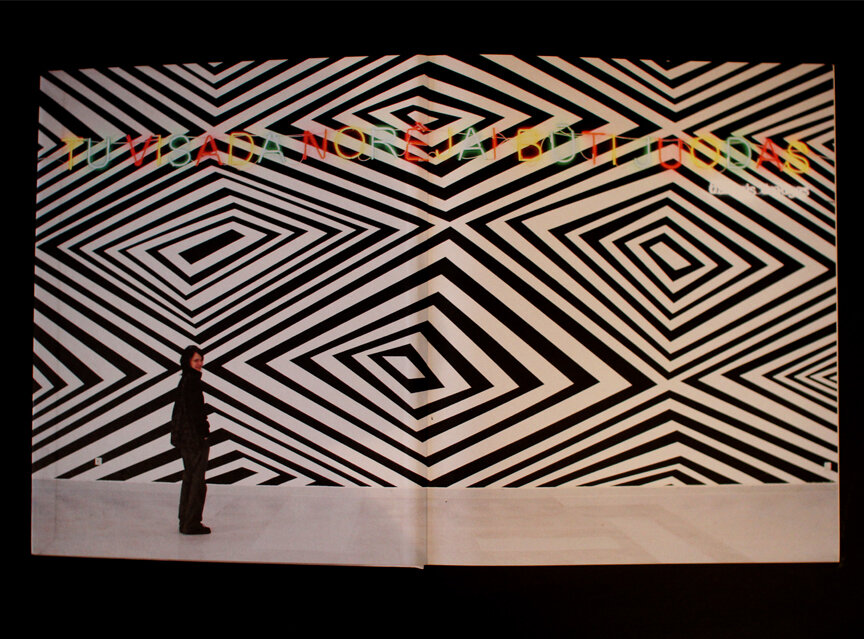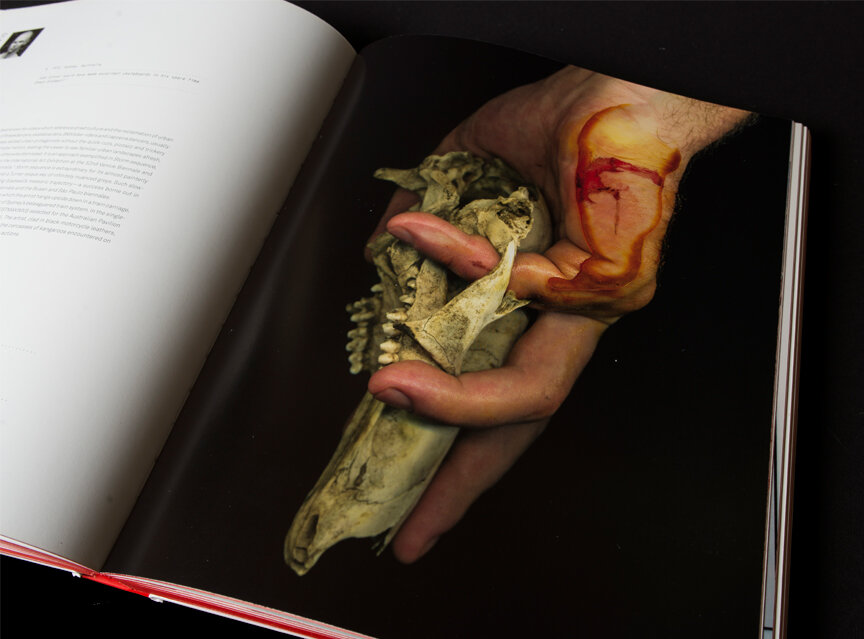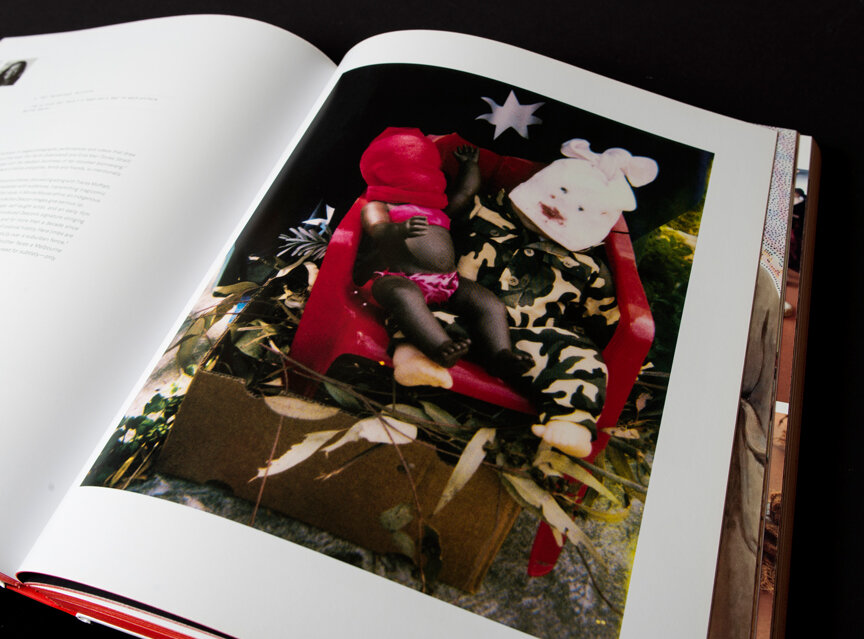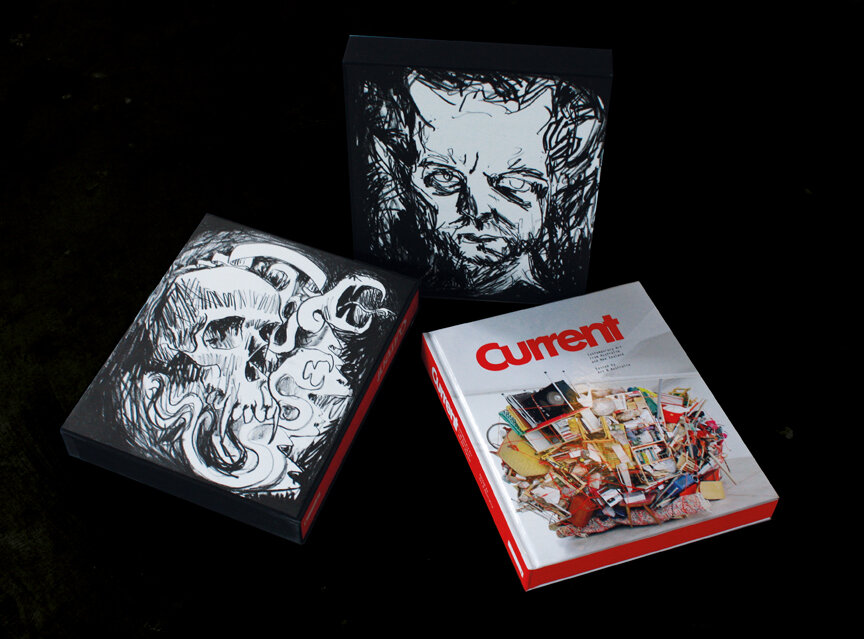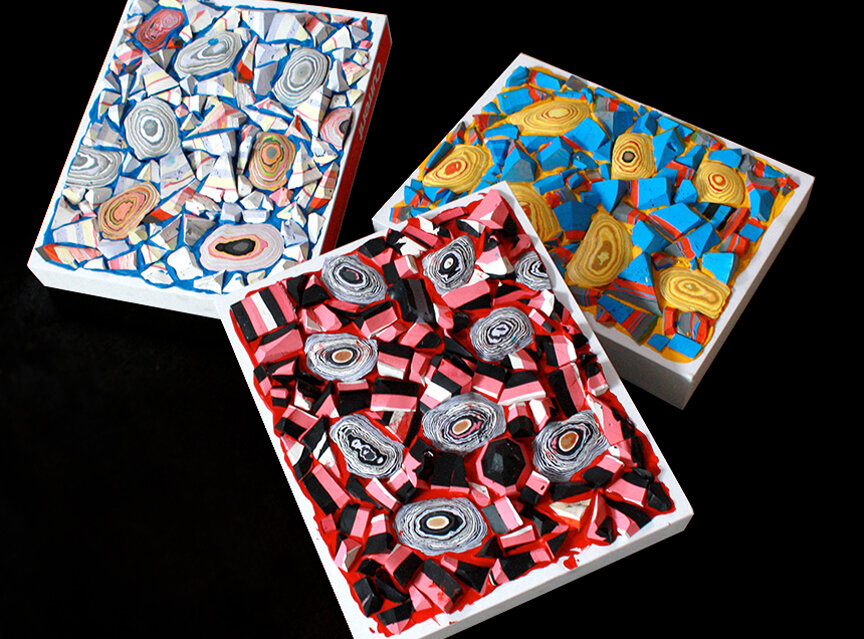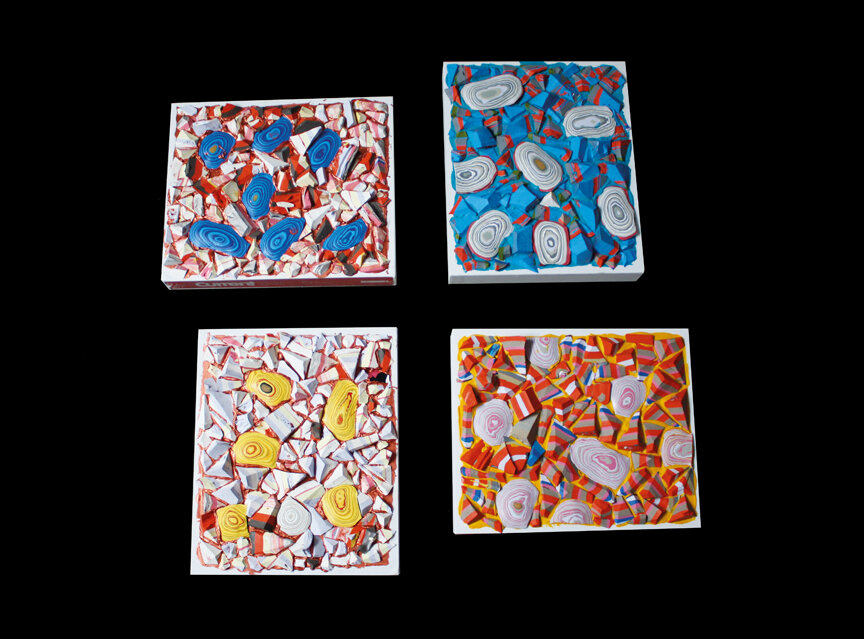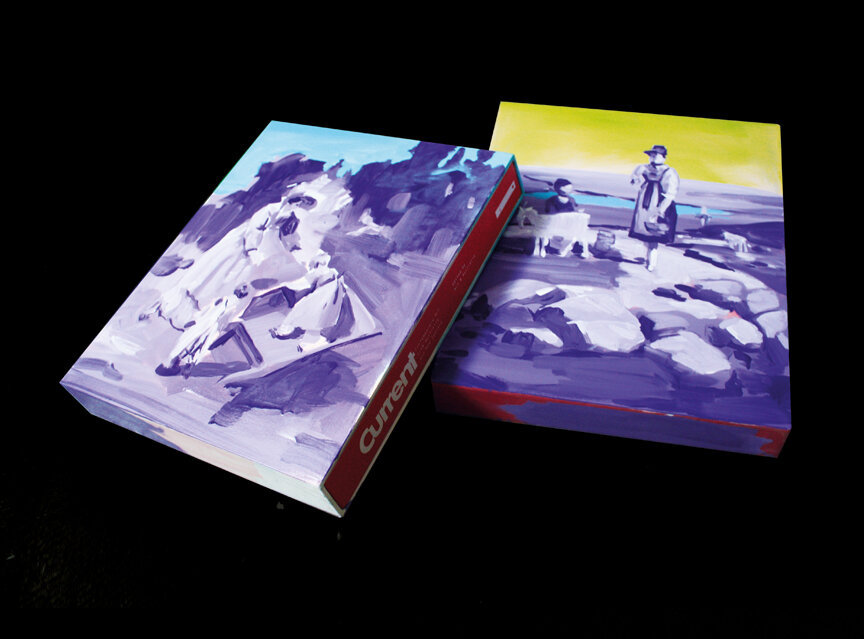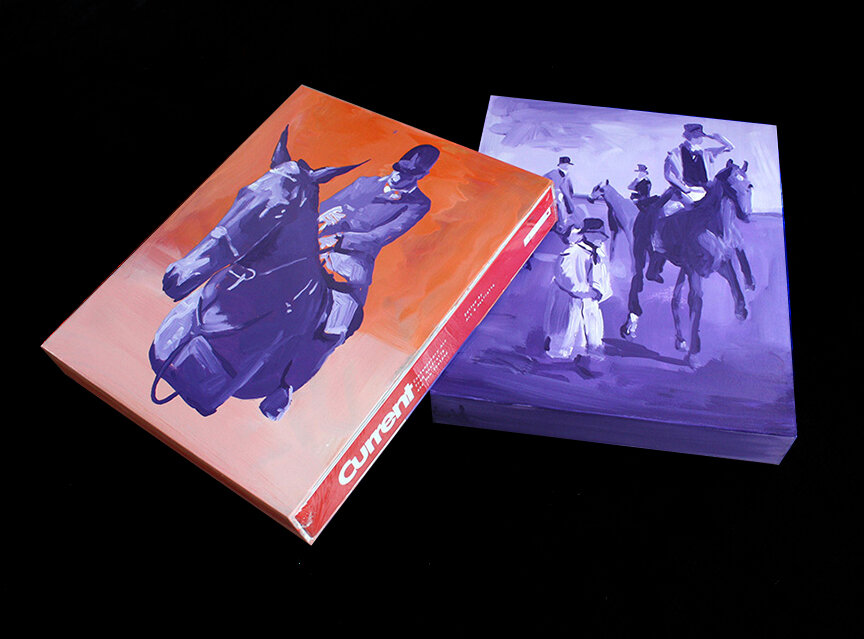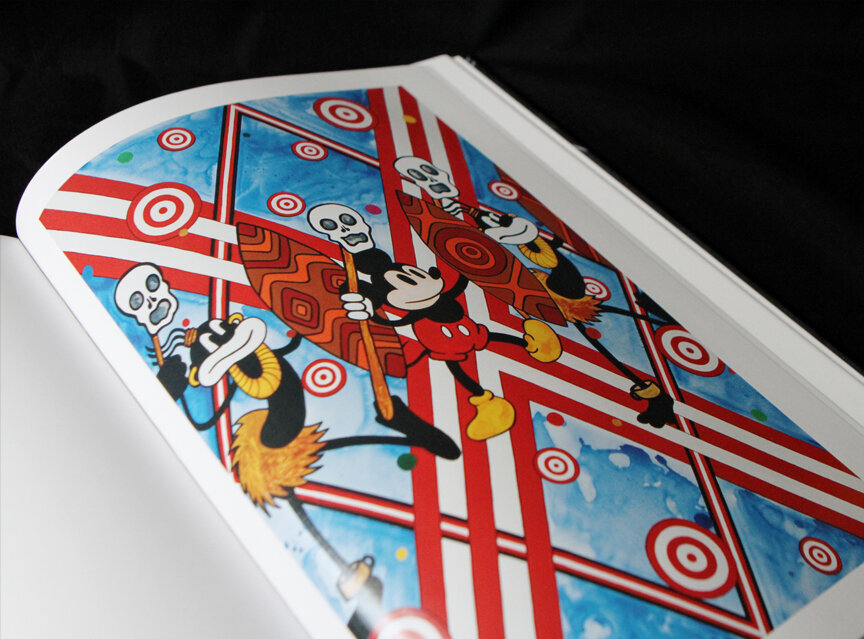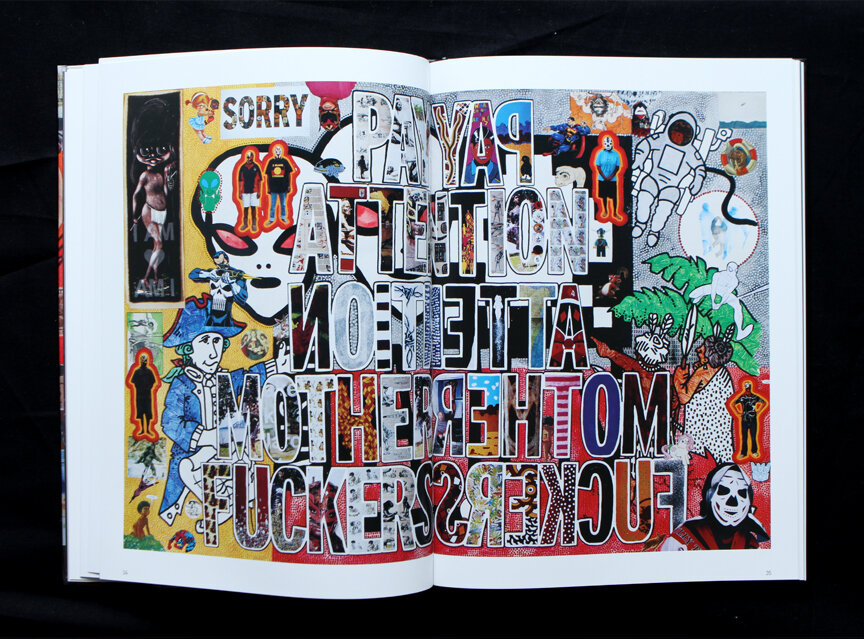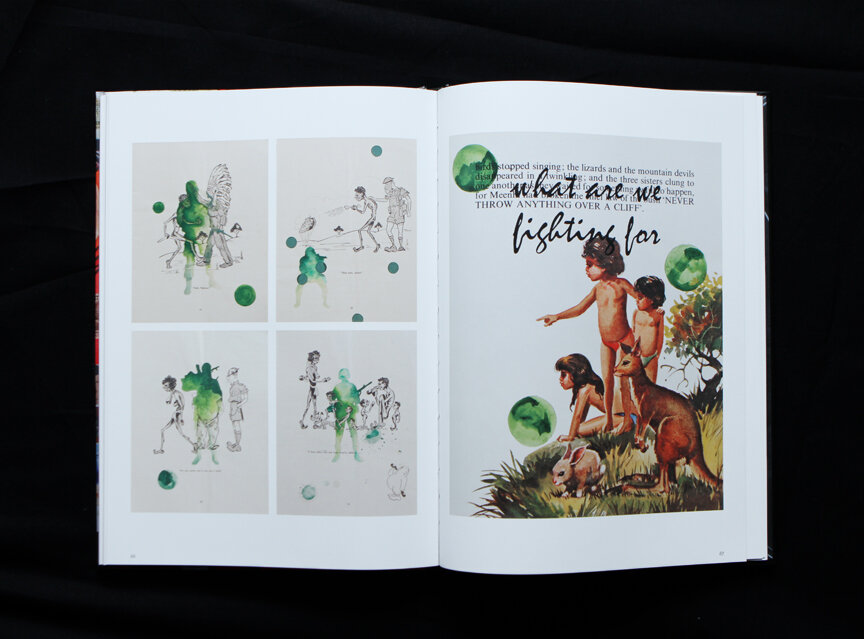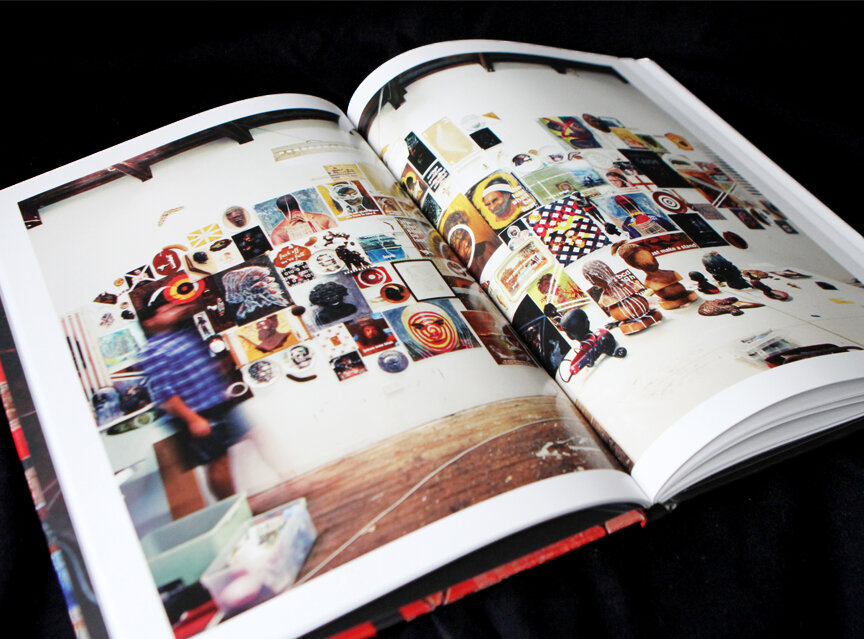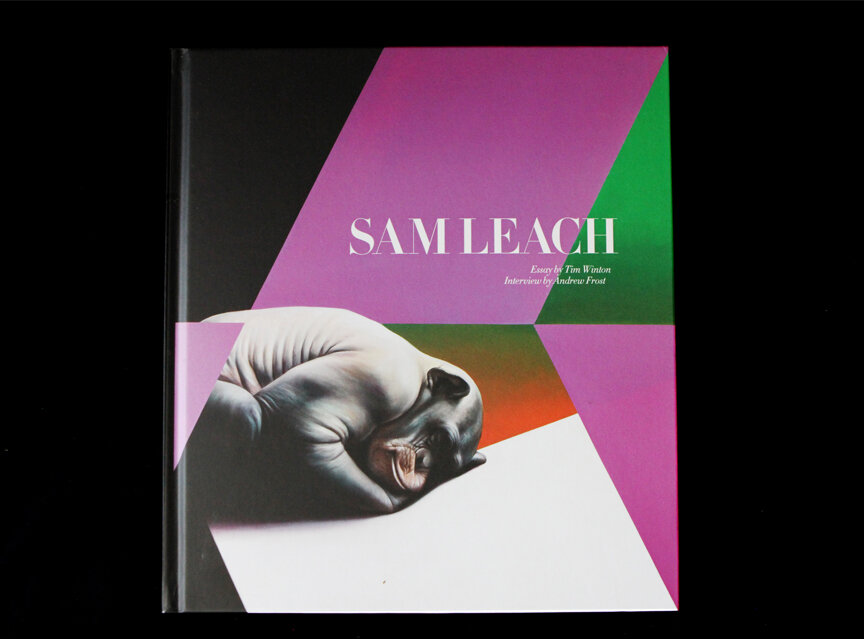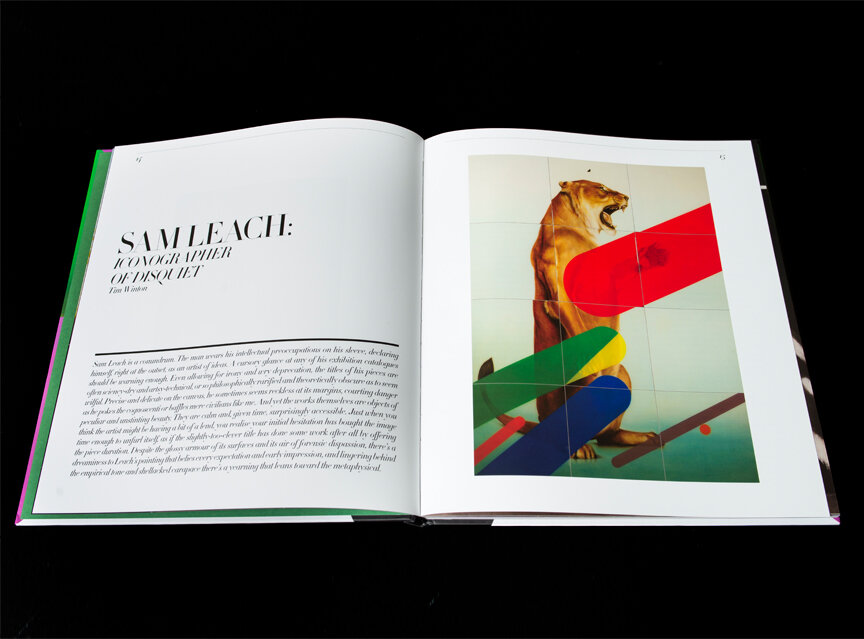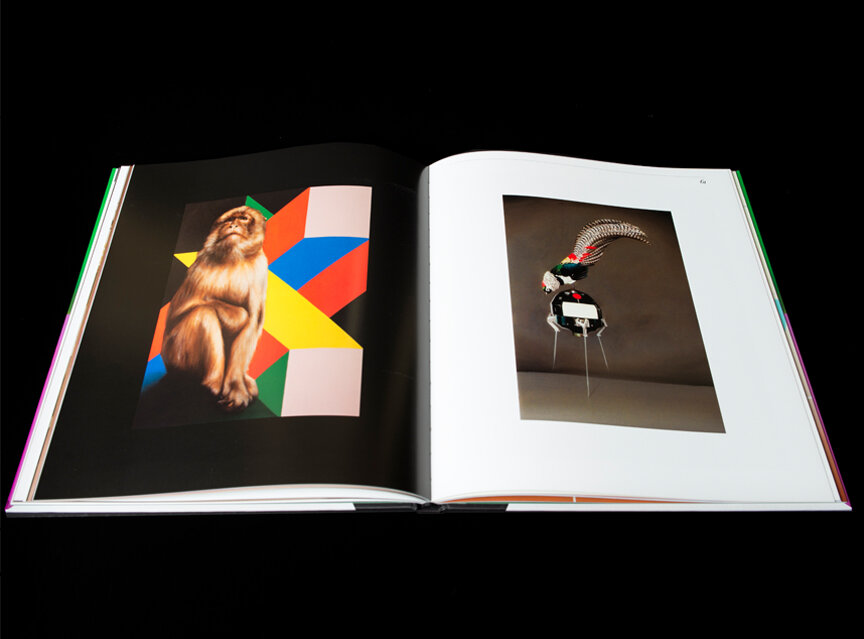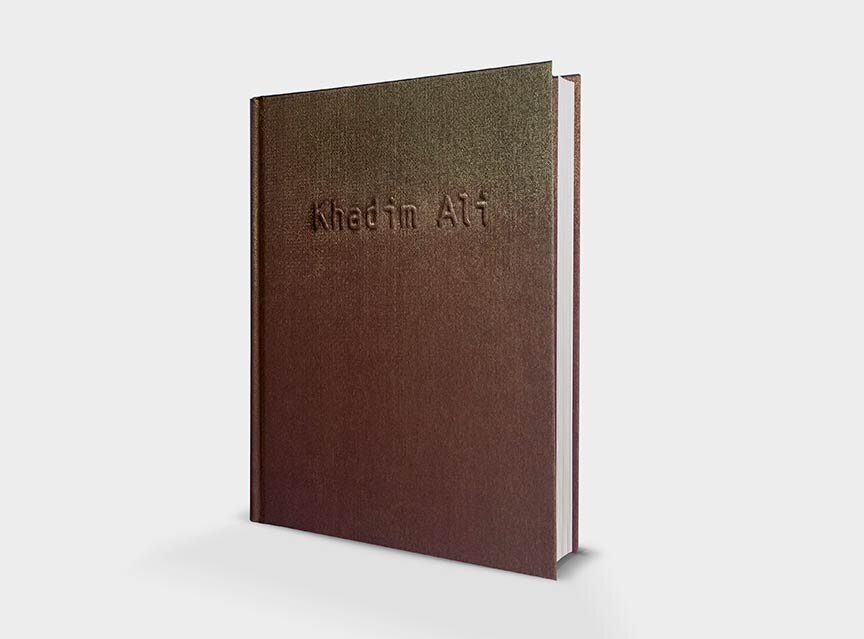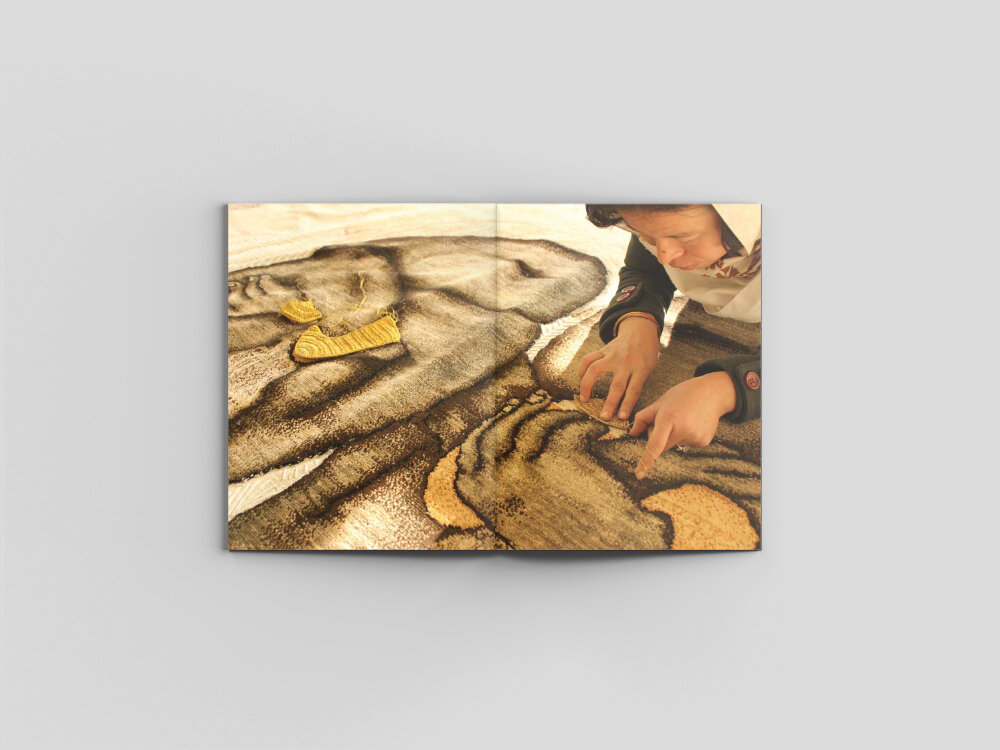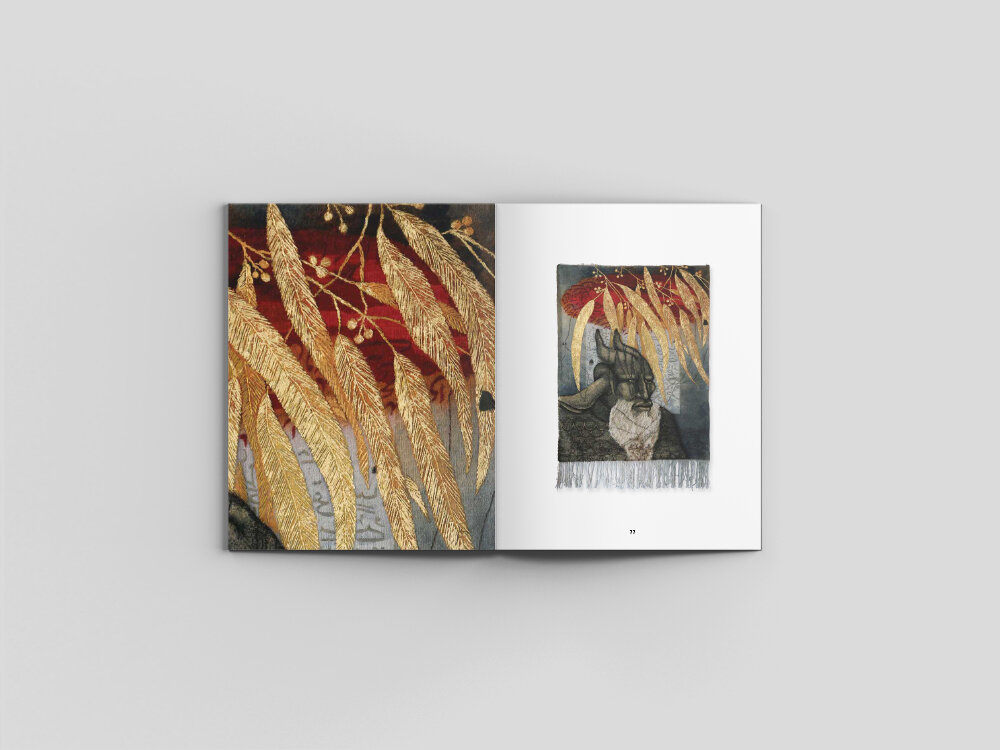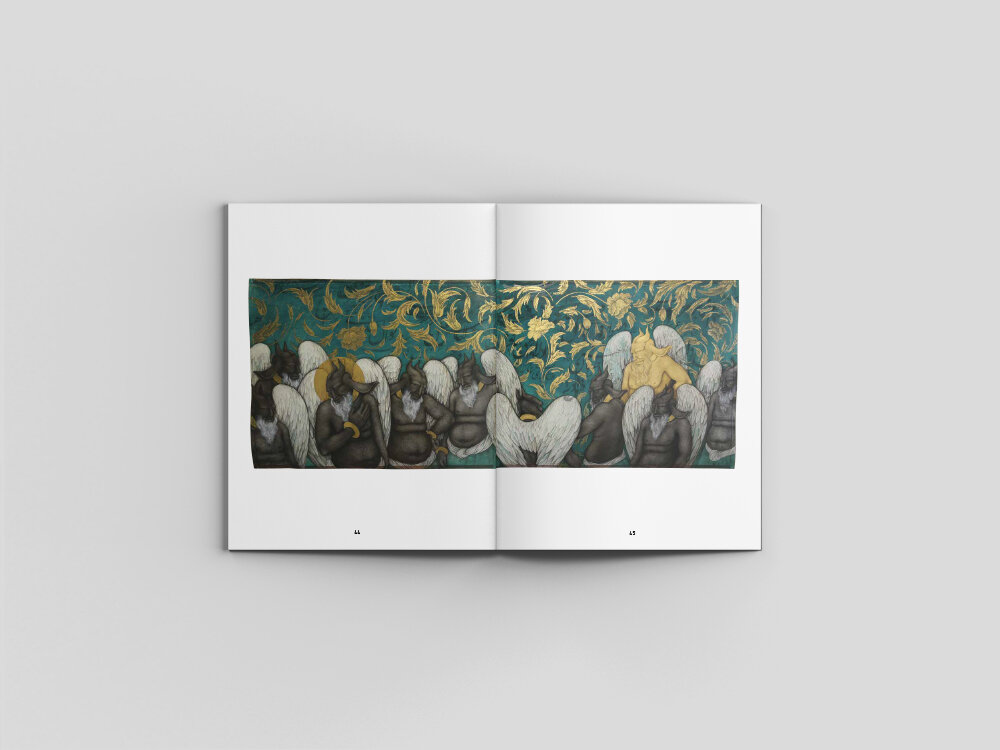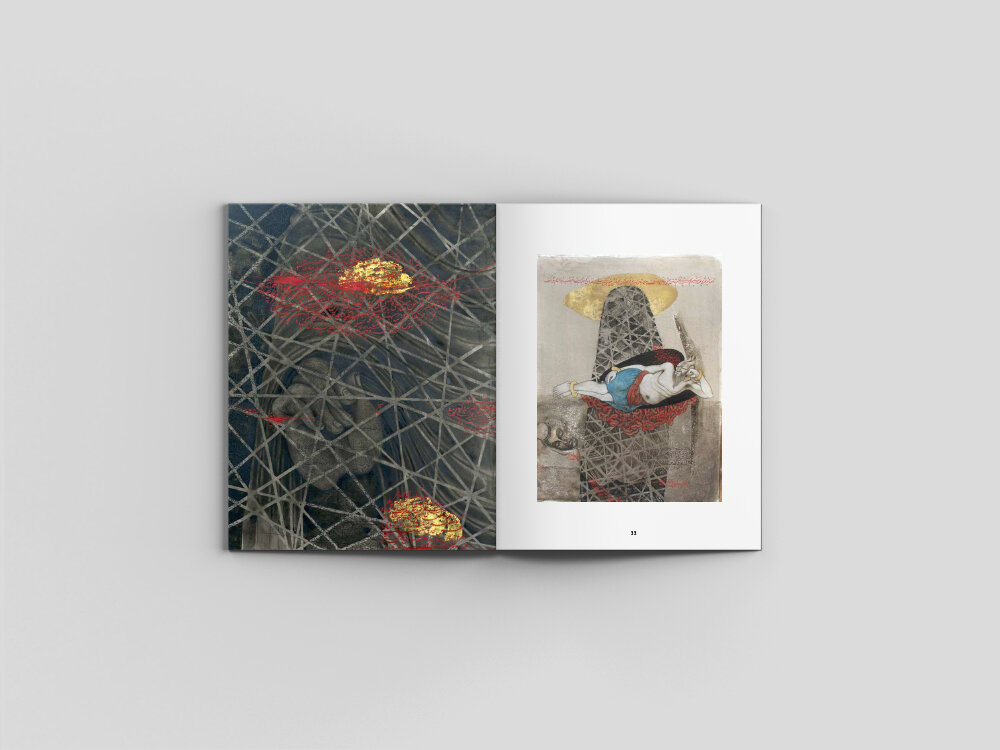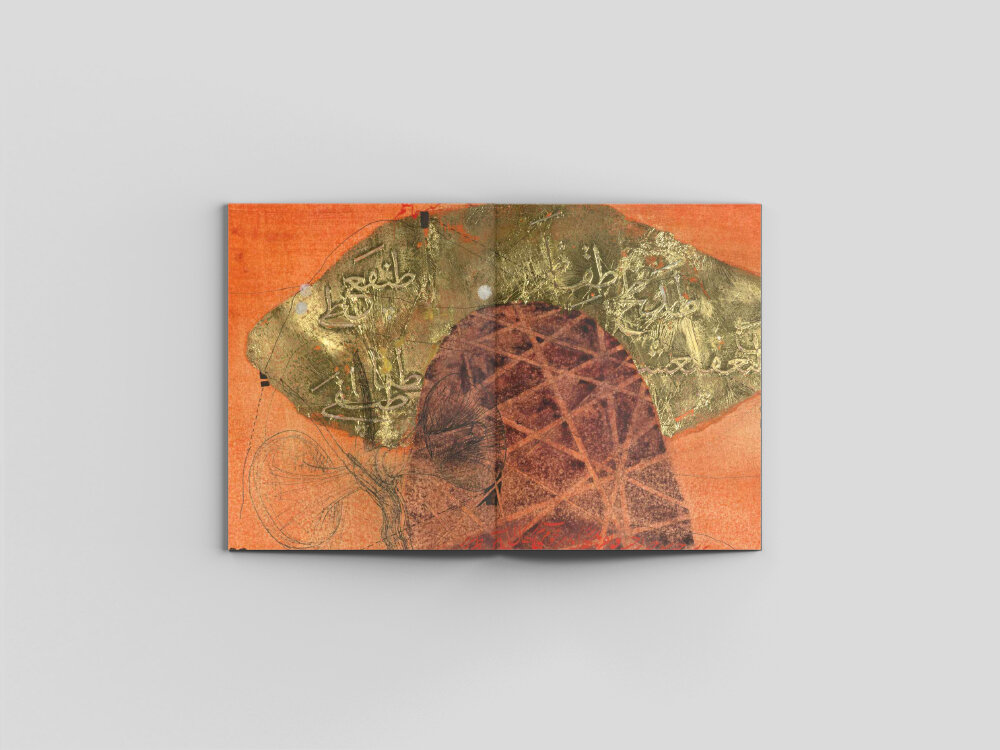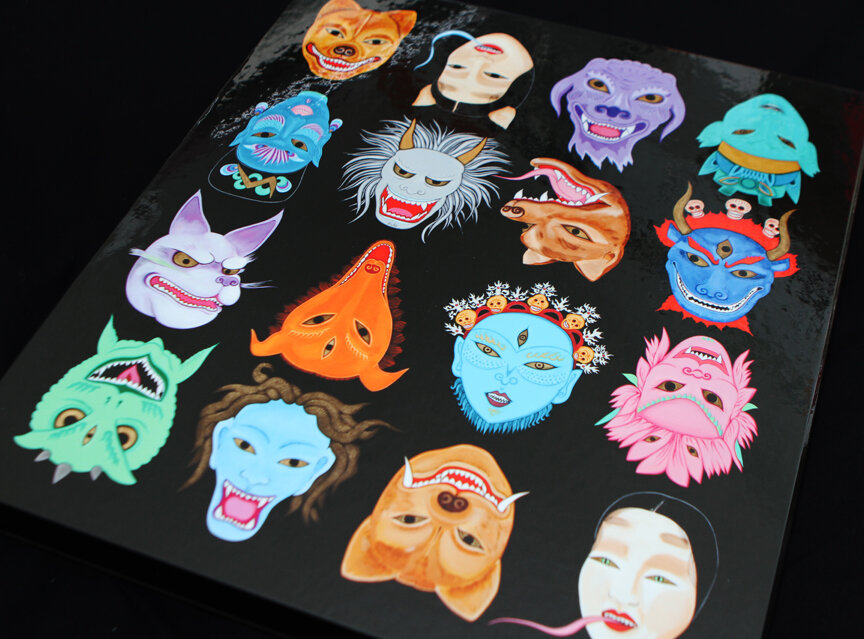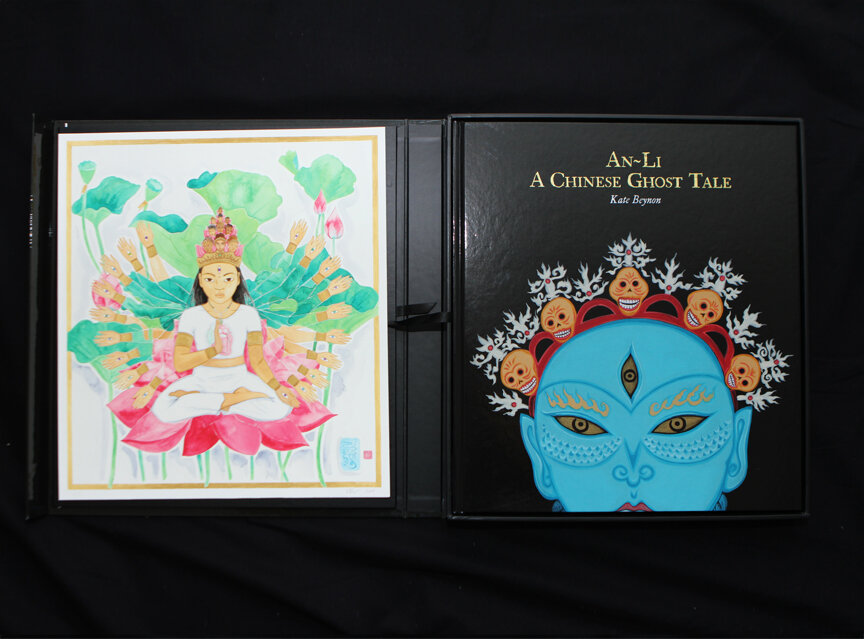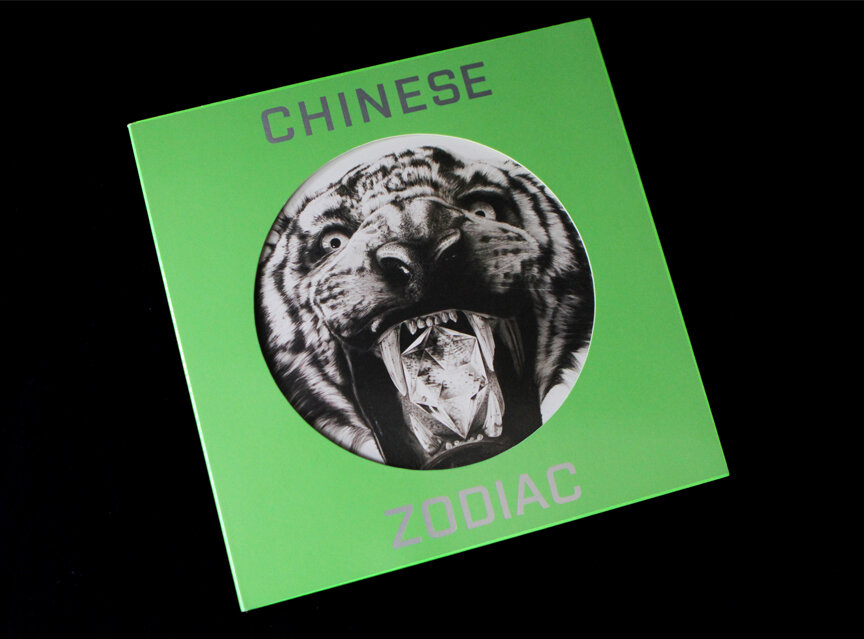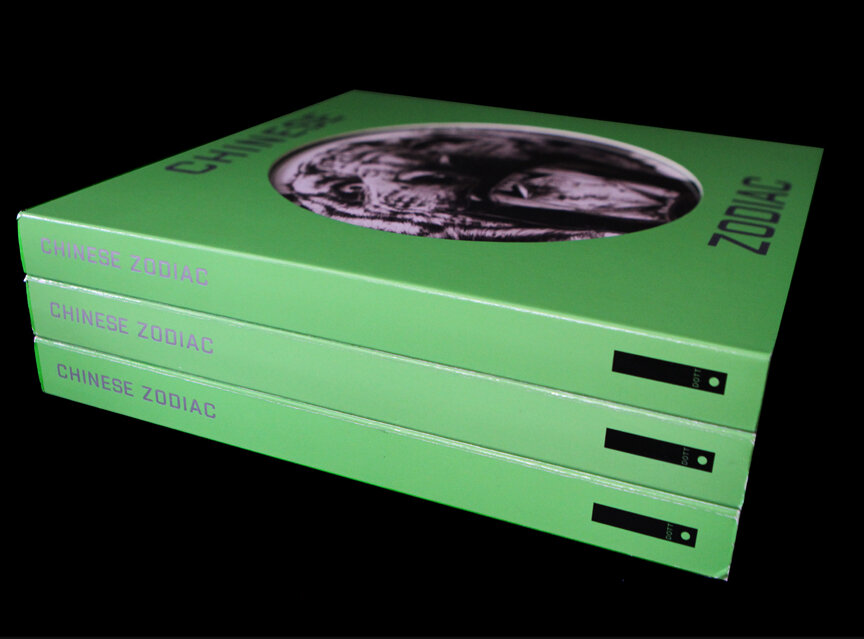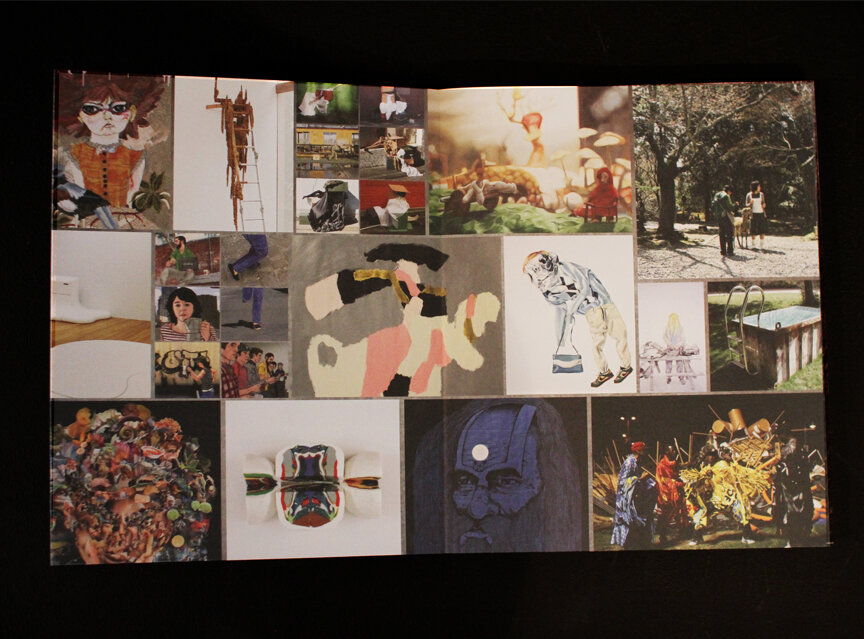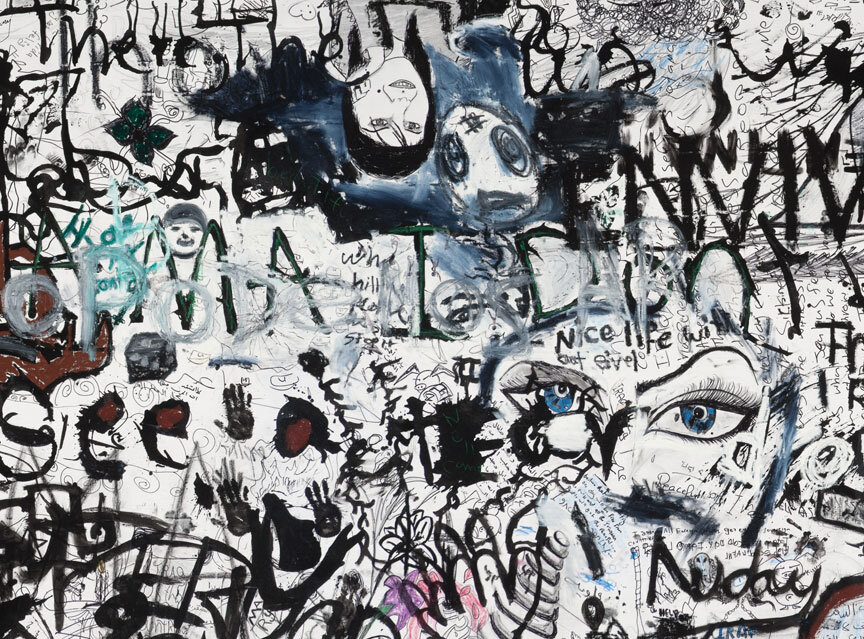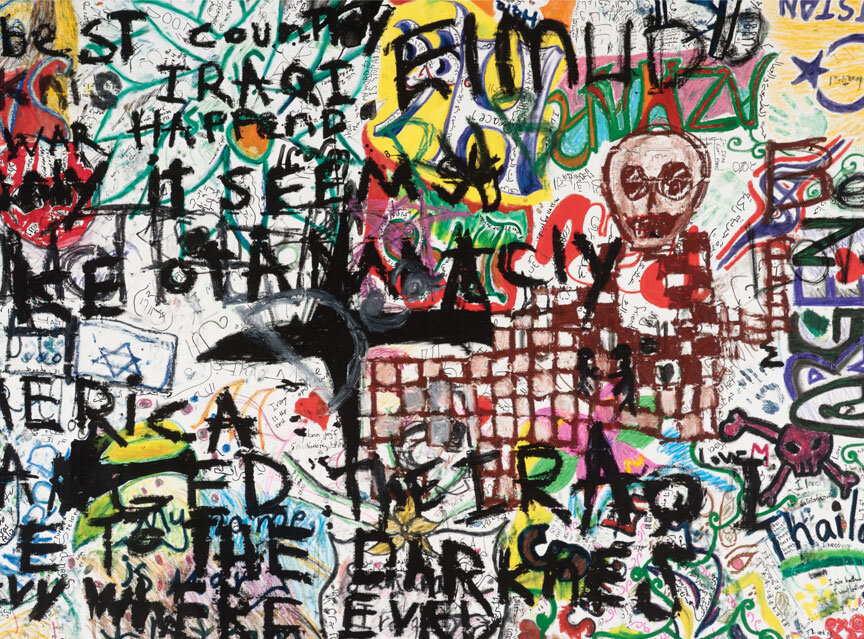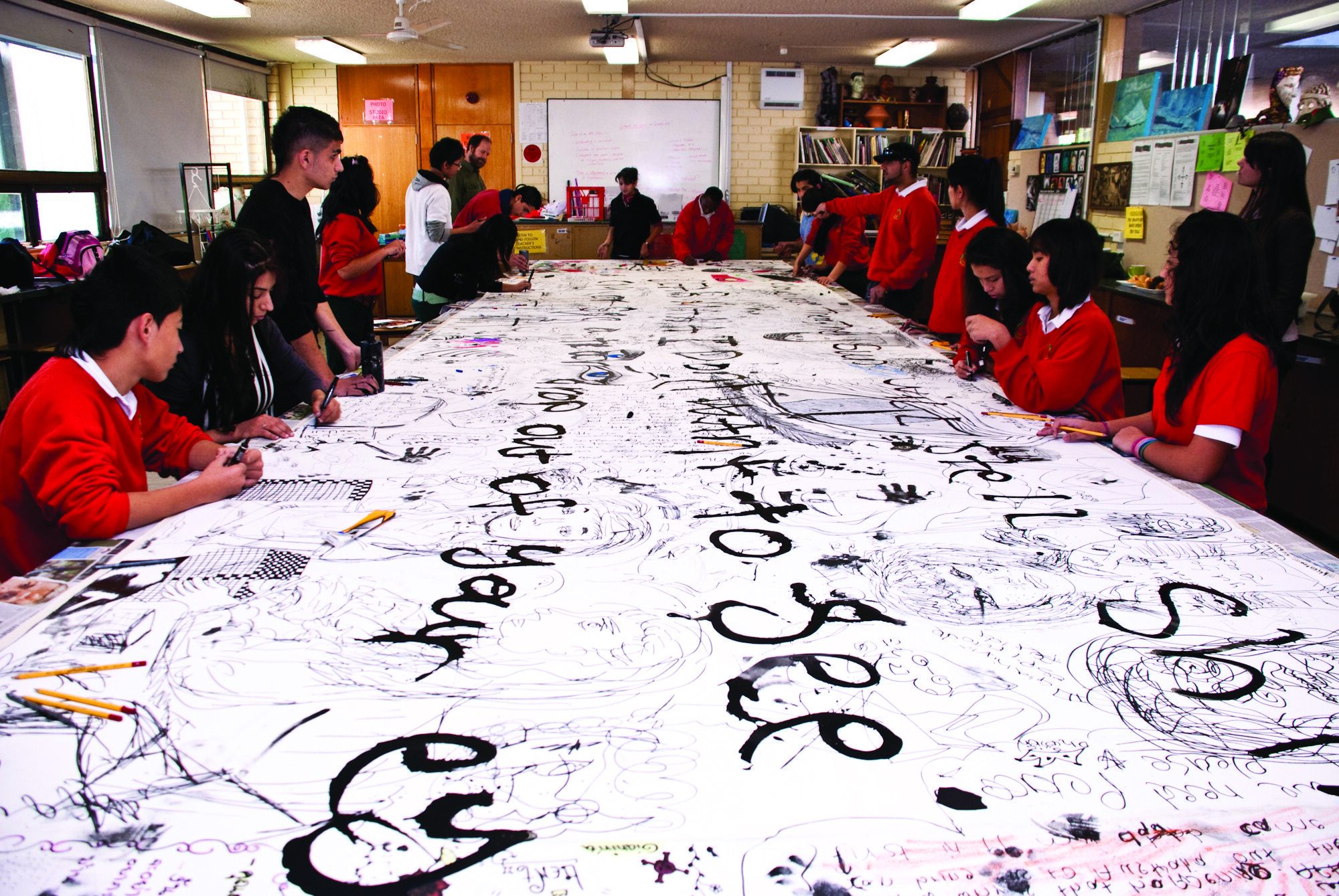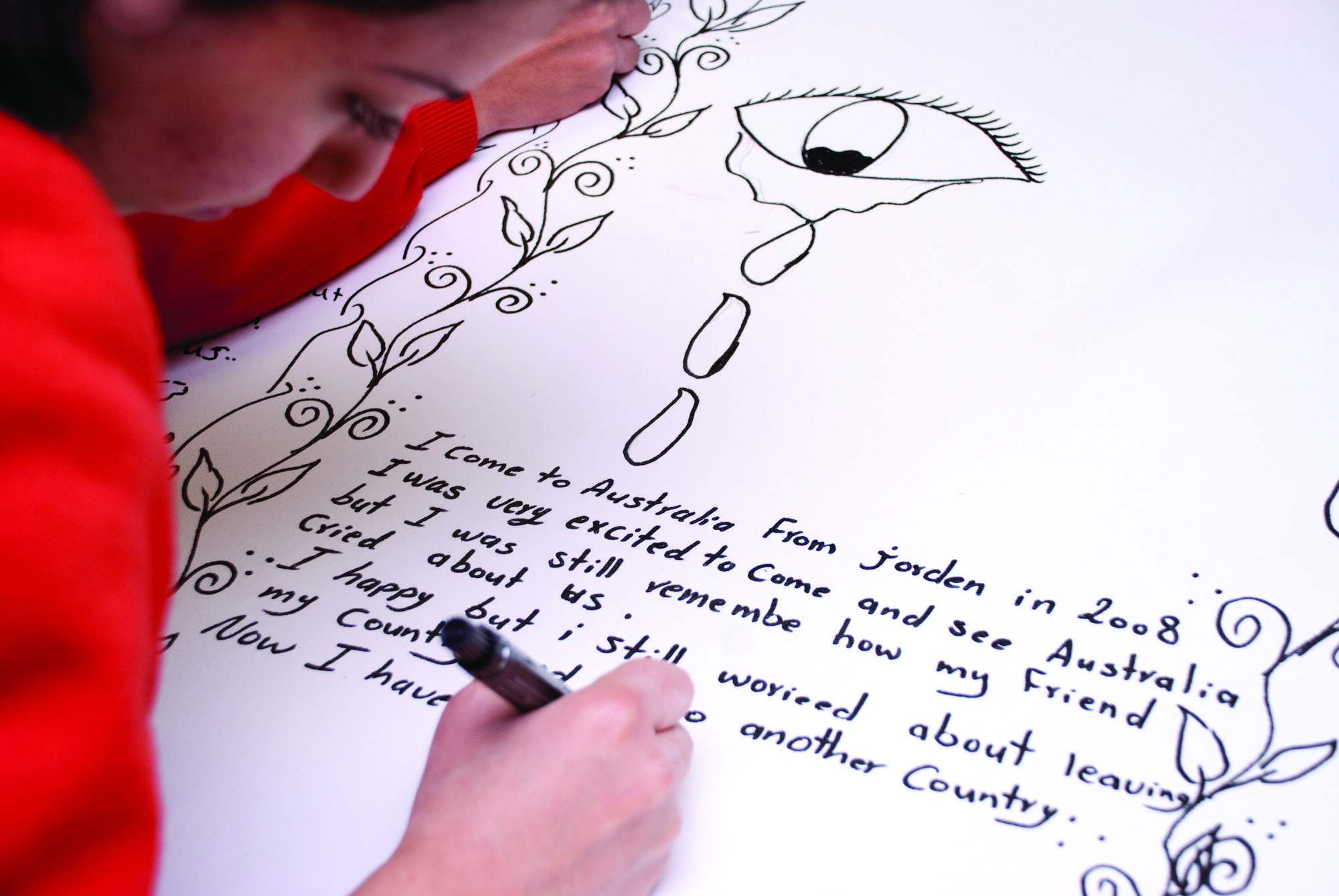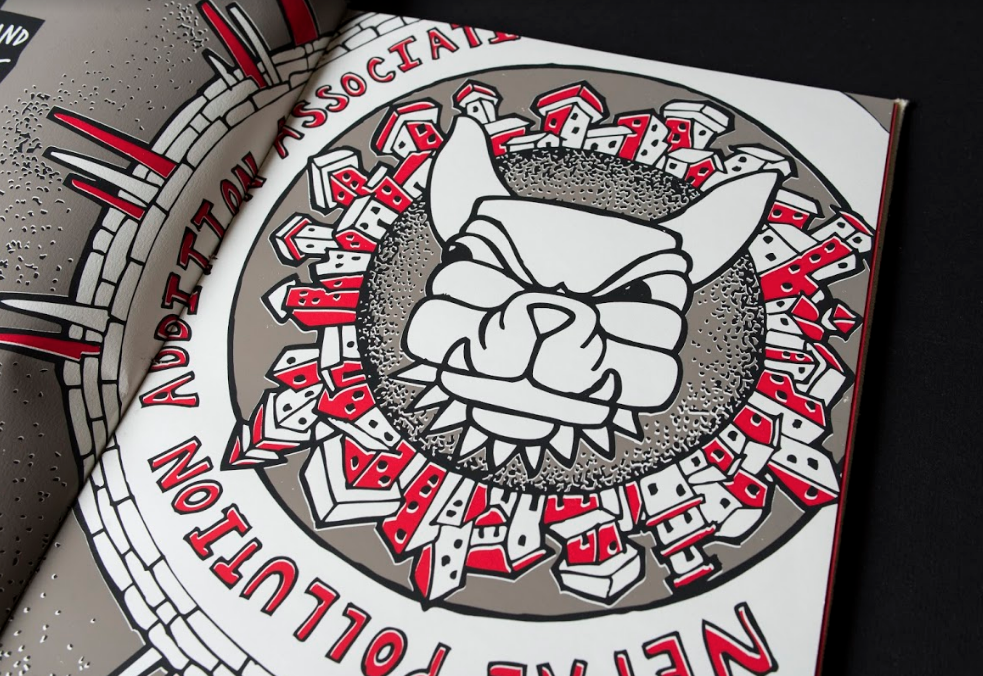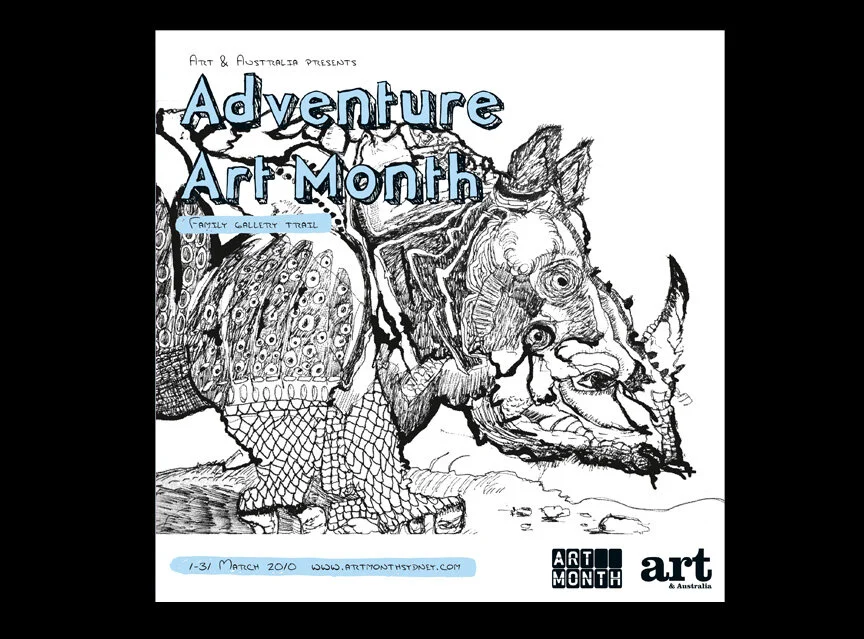ARTISTIC COLLABORATIONS
Del Kathryn Barton
As the second artist invited to engage with the cover as their canvas, Del Kathryn Barton includes not only the arresting and challenging painting or to make myself a space to inhabit, 2007, but reworks the ARTAND Australia logo in keeping with her aesthetic. Following the cover work are or to make myself a space to inhabit too and I am true about this, both 2007, which grace the inside cover pages transforming the beginning of Issue 45.3, Autumn 2008, into a gallery. In celebration of the Cover Commission, Del Kathryn Barton’s practice is discussed in a monographic essay by Anthony Gardner.
Del Kathryn Barton, or to make myself a space to inhabit, 2007, detail; acrylic gouache, watercolour and pen on polyester canvas, 219 x 180 cm; ARTAND Australia Collection; courtesy the artist and Karen Woodbury Gallery, Melbourne
WILLIAM KENTRIDGE +Carolyn Christov-Bakargiev
To coincide with the 16th Biennale of Sydney, Revolution, Forms That Turn; (2008), ARTAND Australia gave over a substantial number of its pages to the Artistic Directors manifesto. In the features section of the Winter 2008 issue, guest edited by Carolyn Christov-Bakargiev, are monographic essays on exhibiting artists William Kentridge, Michael Rakowitz, Stuart Ringholt and Vernon Ah Kee. With this collaboration, ARTAND Australia became an active biennale site, participating in the central proposition that art can be an agent of change.
By collaboratively working with William Kentridge, Michael Rakowitz, Stuart Ringholt and Vernon Ah Kee, the magazine transitions into an active biennale site: participating in the central proposition that art can be an agent of change;. William Kentridge designs the cover, jolting his global perception of the impact of histories. This issue hopes to provoke a revolution of seeing through horror, form, function, medium and message.
Brook Andrew
For this issue (Winter 2010), which celebrated the life and achievements of eminent Australia curator and ARTAND Australia regular contributor and editorial adviser, Nick Waterlow, artist Brook Andrew was specially commissioned to create the collage Witnesses to history, 2010. In situating his work as a tribute to Waterlow, Andrew said: ‘Nick was a great believer in witnessing history and activating change. His was an eye-wide-open approach.’ In a monographic essay, Anthony Gardner further contextualises Andrew’s artistic practice. Brook Andrew, Witnesses to history, 2010, detail Magazine, newspaper, ink, 40 x 70 cm ARTAND Australia Collection Courtesy the artist and Tolarno Galleries, Melbourne
JOHN BALDESSARI
For the Summer 2010 issue, ARTAND Australia collaborated with Kaldor Public Art Projects to create a cover with John Baldessari, coinciding with his ambitious artwork, Your name in lights, 2011, which graced the faccedilade of the Australian Museum for the 2011 Sydney Festival. Creating Hand grasping a spider, 2010, for the cover, Baldessari reinterpreted the ARTAND Australia logo through his handwriting. John Baldessari, Hand grasping a spider, 2010 digital file, dimensions variable, courtesy the artist
Louise Weaver
This issue (Vol 44 Number 3 Autumn 2007) begins with a journey through the bestiary of Jorge Luis Borges ‘Book of Imaginary Beings’, passing mythological animals through to the creatures of our cultural imagining. From here, Louise Weaver’s exquisite and exotic creatures suggest themselves, creating Guido, the crocheted pacific gull, for the magazine’s front cover. This inaugurates a new series of Art & Australia Artist Editions. The central essay in this issue sees Jason Smith draw together a range of diverse and intriguing historical and contemporary influences in Louise Weaver’s work. This art classifies a ‘post-natural’ attitude, in which nature and culture become intertwined. We take the mythological animals of Borges and contemporises them, applying his bestiary folklore into an explanation of the transforming landscape of contemporary art; merging mythology and reality into a singular, powerful entity.
PATRICIA PICCININI
When trying to capture how we might understand spirituality in contemporary secular times, Australian religious studies scholar David Tacey draws on romantic poet John Keats and his notion of ‘negative capability’, namely, the capacity to be ‘in uncertainties, mysteries, doubts, without any irritable reaching after fact or reason’. When arguing the case for the need to ‘reconfigure the spiritual’ in contemporary art, American philosopher Mark C. Taylor suggests that four influential artists who have shaped the current discourse – Joseph Beuys, Matthew Barney, James Turrell and Andy Goldsworthy – all ‘have an abiding faith in the capacity of an “apocalypse of the imagination” to transform first the self and then the world’. And when attempting to articulate a new way of experiencing the relationship between humans and their environment, American political theorist Jane Bennett contends that not only are objects alive because of their capacities to shape the interrelationships of which they are a part, but humans are not autonomous; rather, they comprise a complex web of active bodies and materials. If we rethink the human/object dichotomy in this way, it leads us to accept that ‘any action is always a trans-action, and any act is really but an initiative that gives birth to a cascade of legitimate and bastard progeny’.
These attempts to reimagine relations between spirit, nature and human – that are to some extent driven by the prospect of impending ecological disaster – provide a fertile context to consider the most recent work of Patricia Piccinini.
1. Metaflora (the female radical), 2014; digital drawing for ARTAND Australia, dimensions variable; courtesy the artist, Tolarno Galleries, Melbourne, and Roslyn Oxley9 Gallery, Sydney
ROSEMARY LAING
For an issue that celebrated Australian artists overseas and the 2007 Venice Biennale, cover artist Rosemary Laing’s four-colour offset lithograph pictures a woman suspended in an expanse of land and sky. The edition accompanies an essay by Rex Butler on Laing’s artistic practice in Issue 44.4, Winter 2007 Rosemary Laing Weather #16, 2007, edition size: 30, four-colour offset lithograph, 63 x 90 cm
Ricky Swallow - Venice - John Kaldor
In Vol. 42 No. 4, 2005 of Art & Australia, John Kaldor selects six contemporary Australian artists to feature in our essay section. Curator of the New York Museum of Modern Art, Klaus Biesenbach, considers what it means for artists, such as Ricky Swallow, to internationally represent Australia on a global stage. We look at artists as a product of an increasingly contemporary international art world. Juliana Engberg approaches James Angus and Callum Morton on their sculptural works. Russell Storer writes on Daniel Crooks, TV Moore and Daniel von Sturmer about video in the expanded field. John Kaldor presents the first of his sections and George Alexander turns his attention to various art-world issues in his new column for Art & Australia. Featured artists and writers include: Klaus Biesenback, Sarah Thomas, Wally Caruana, George Alexander and Ronald Millen.
Susan Norrie + Juliana Engberg
Susan Norrie has created a special cover for this focus issue of Art & Australia, Vol. 41/4, based on her 2004 Biennale of Sydney work ENOLA. The cover features video stills of Tobu World Square, a miniature world in Japan, perfectly encapsulating the biennale’s global reach. Juliana Engberg writes on Susan Norrie, an artist known for her mastery of painting but who has more recently produced installation and video works dealing with environmental devastation.


